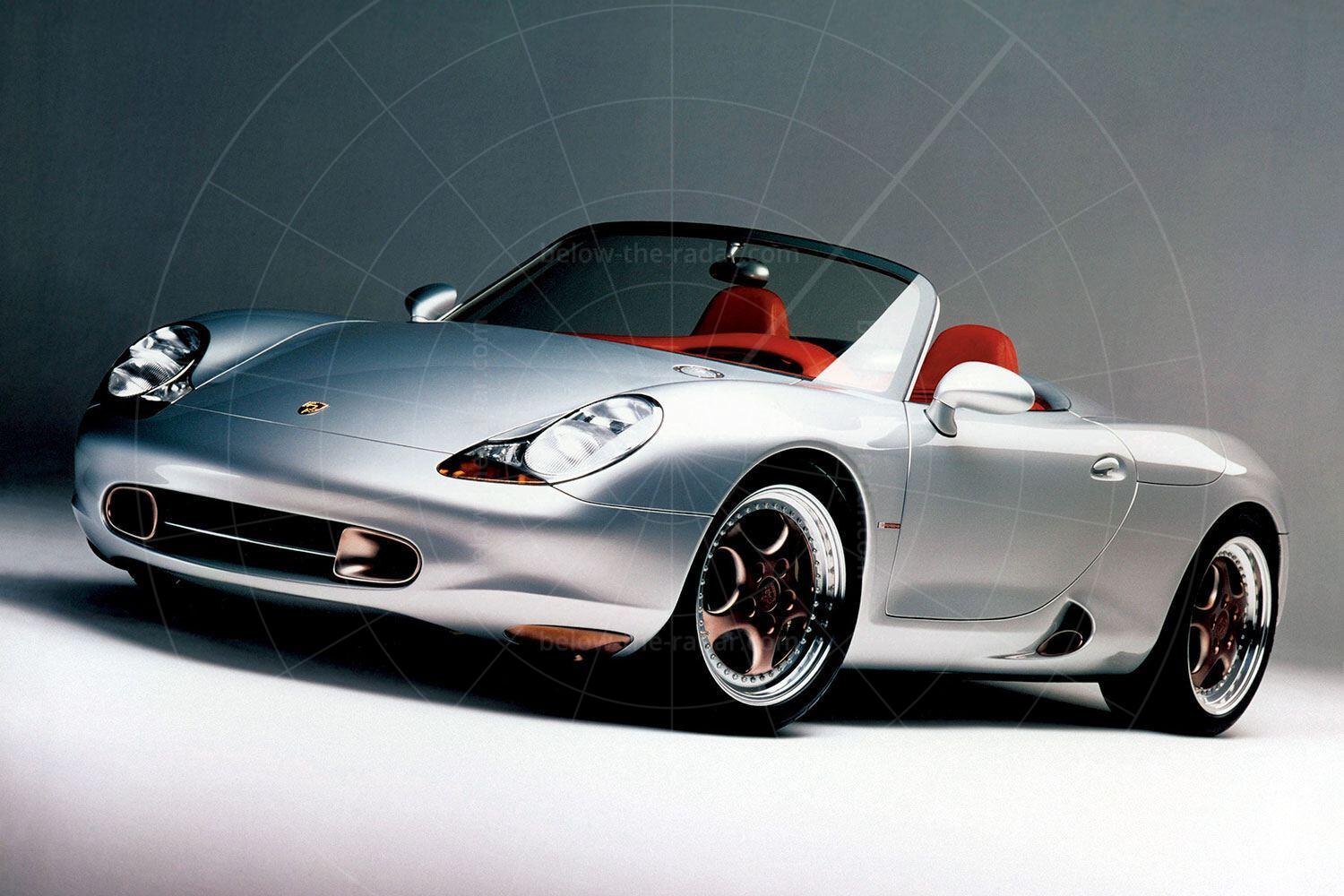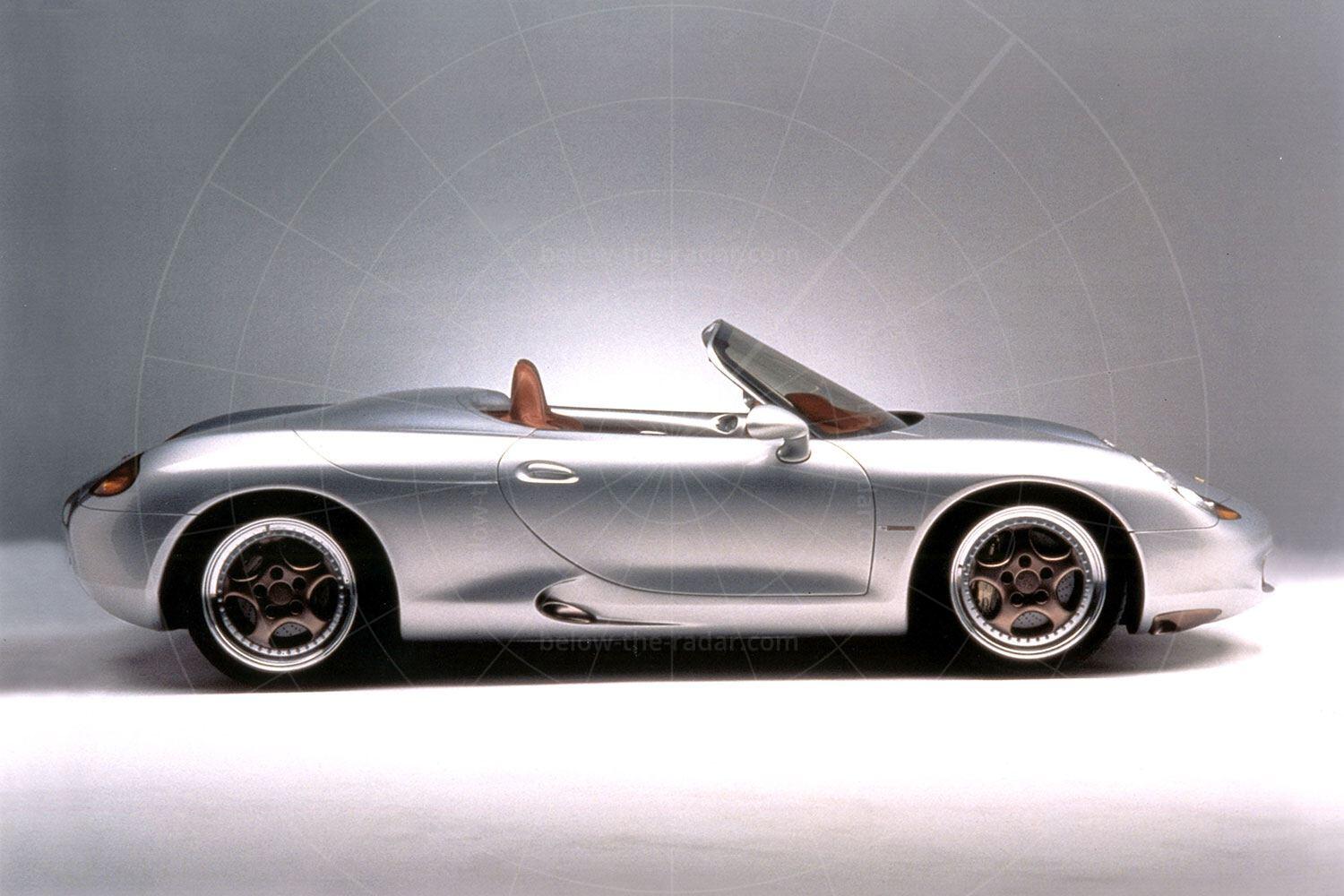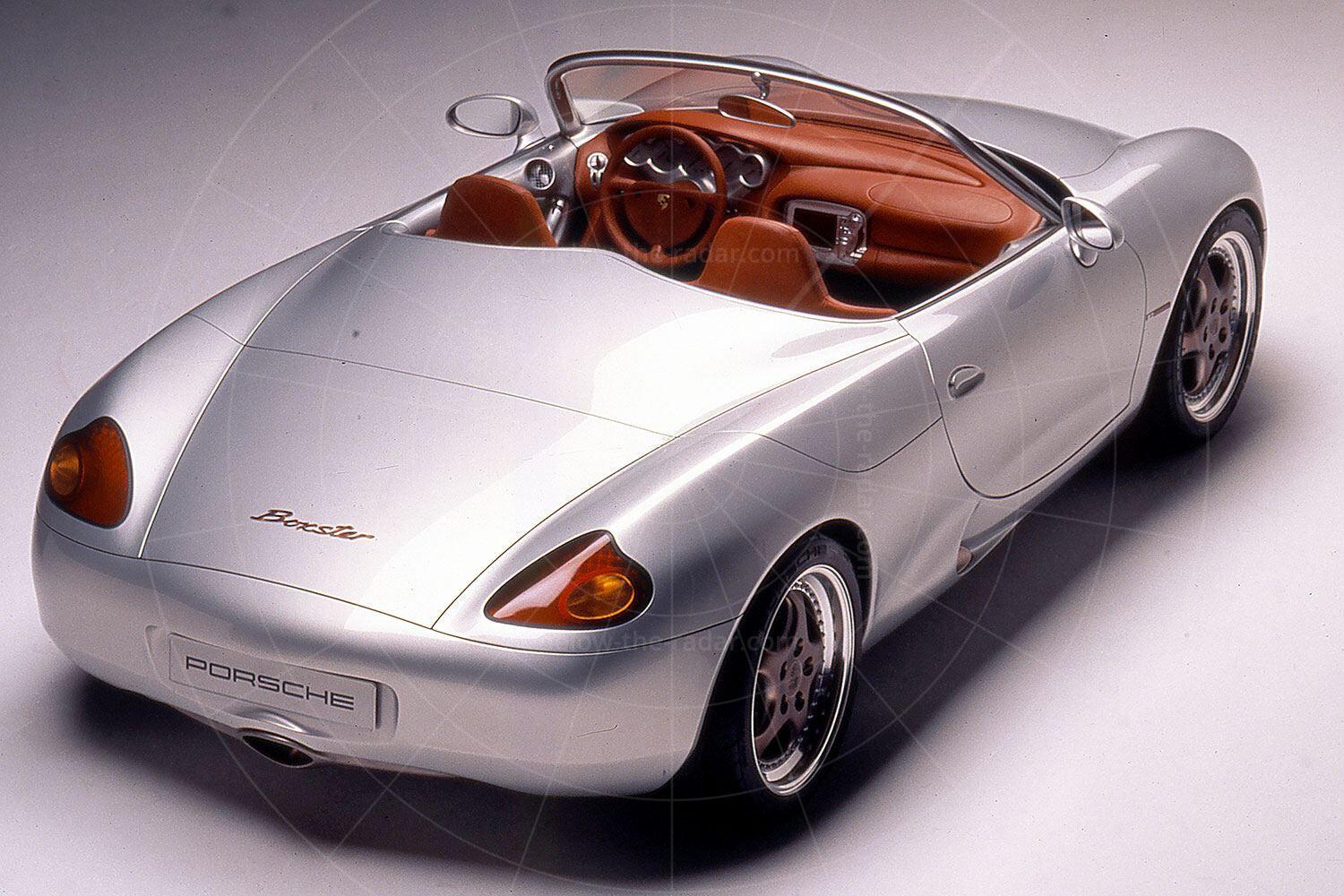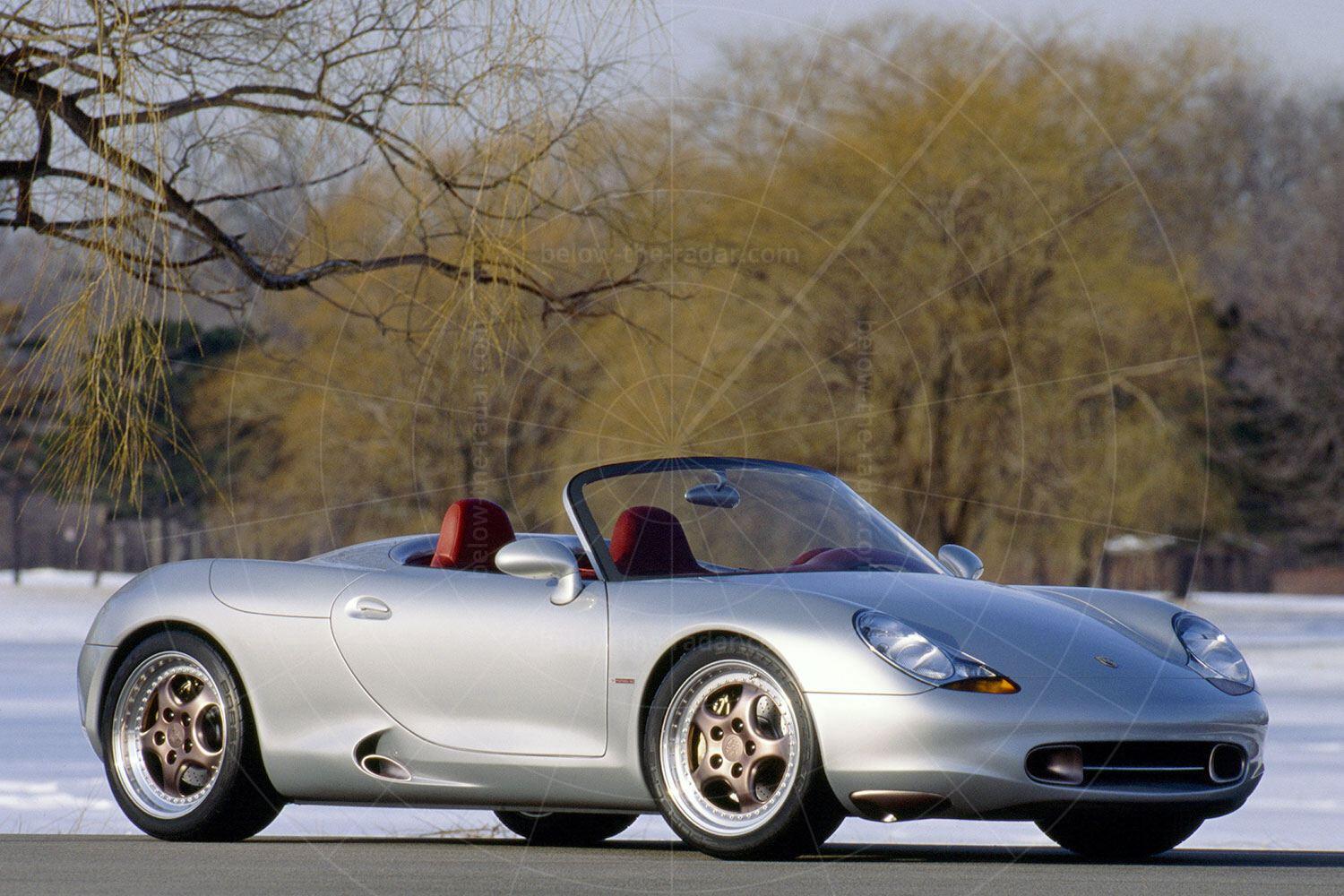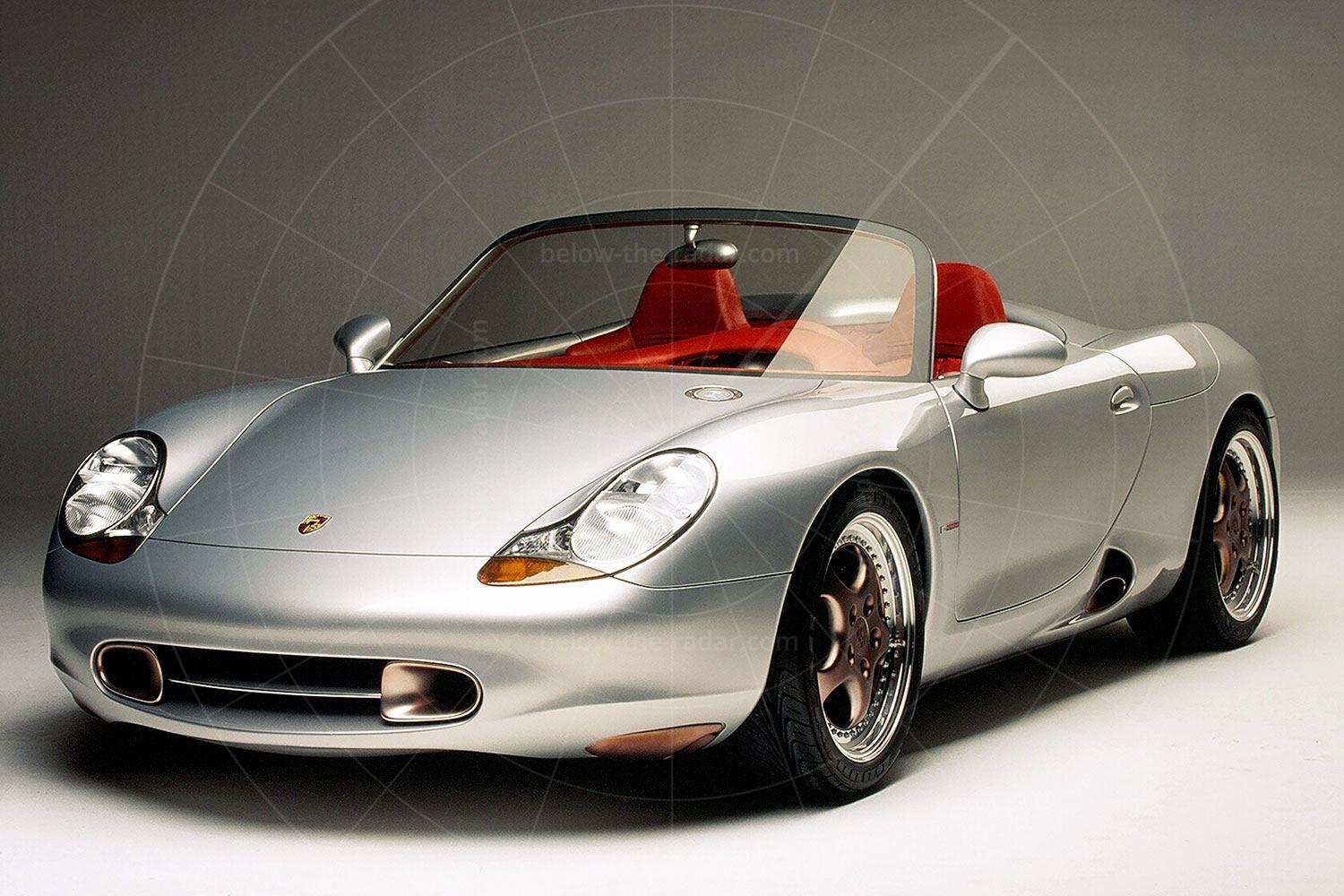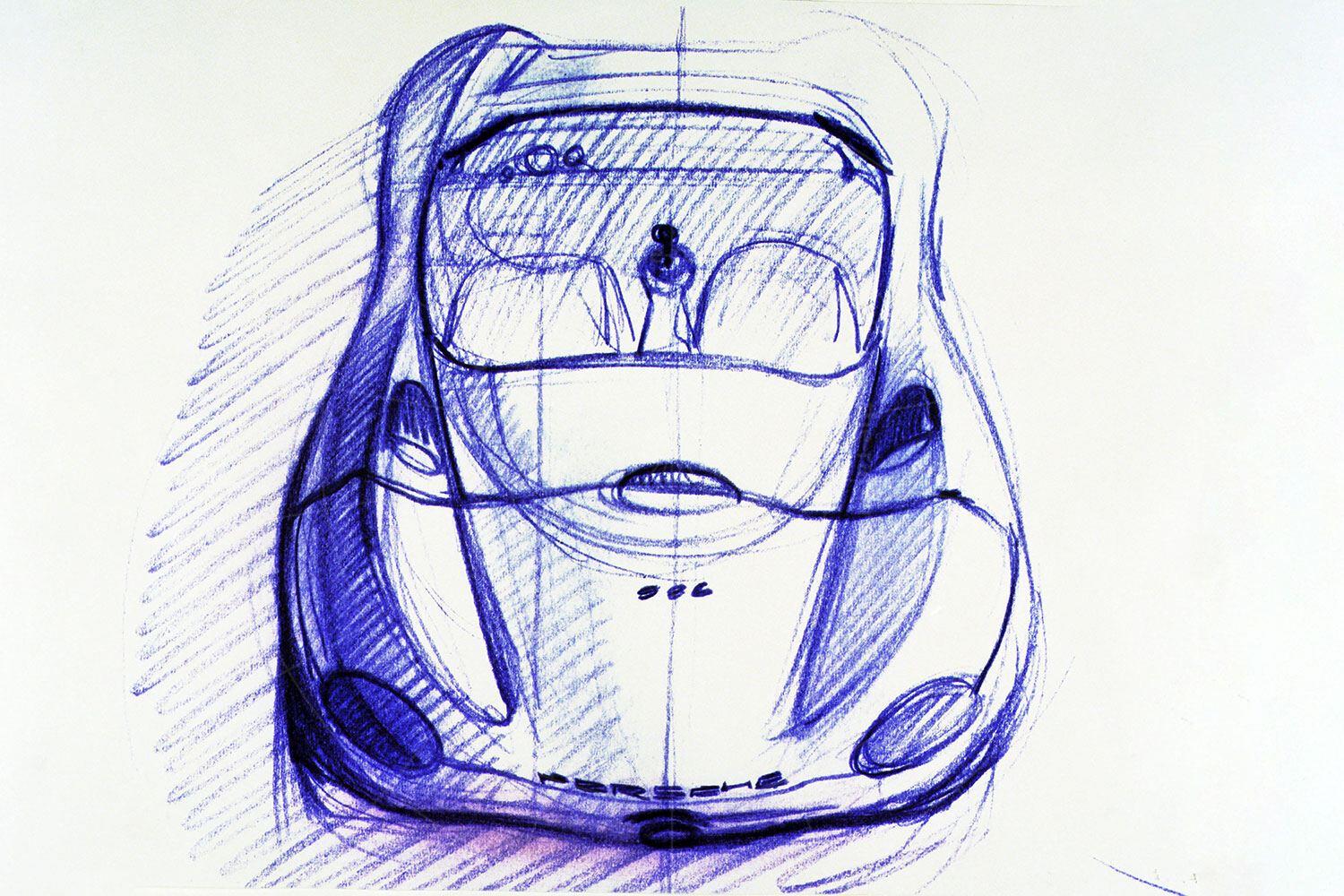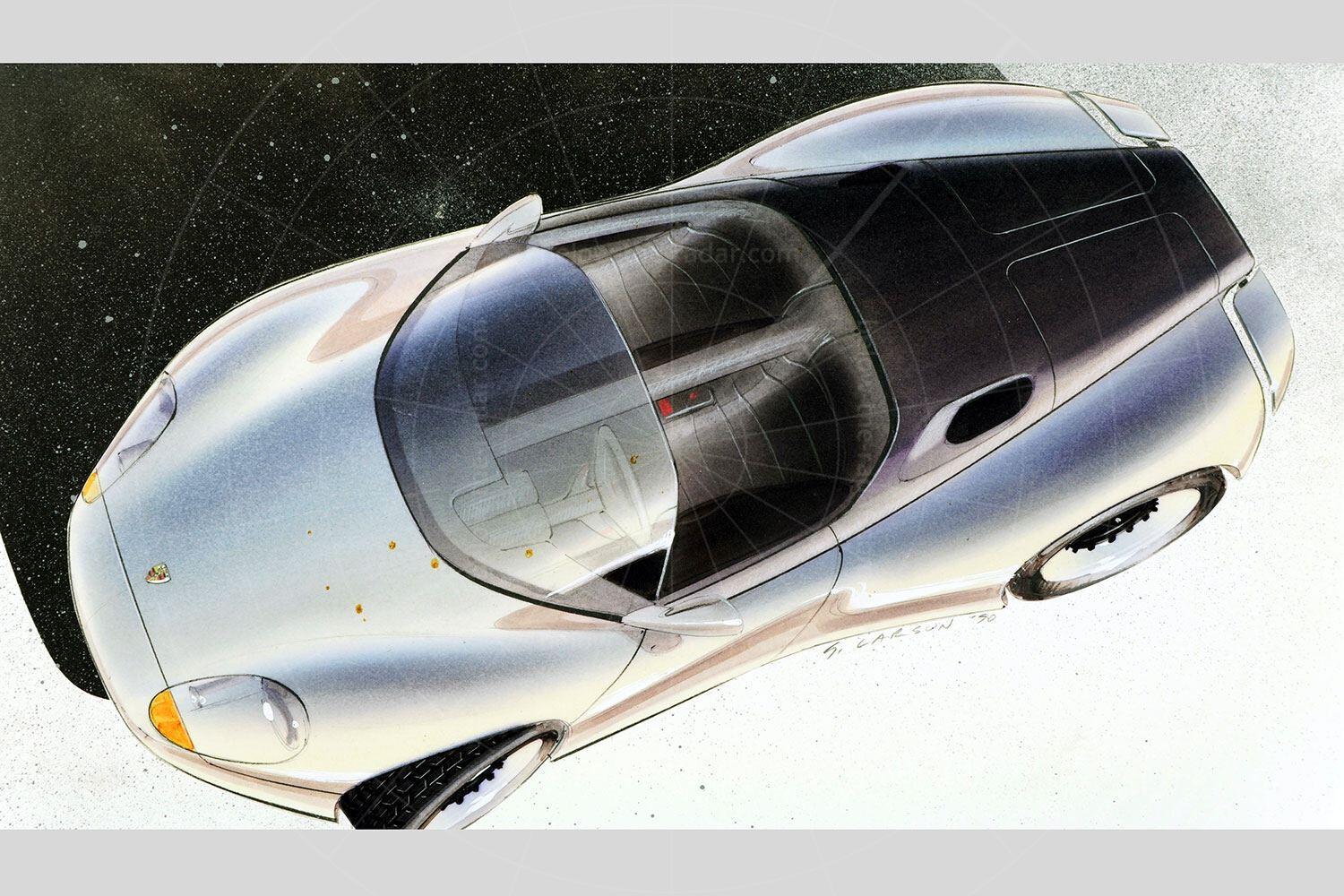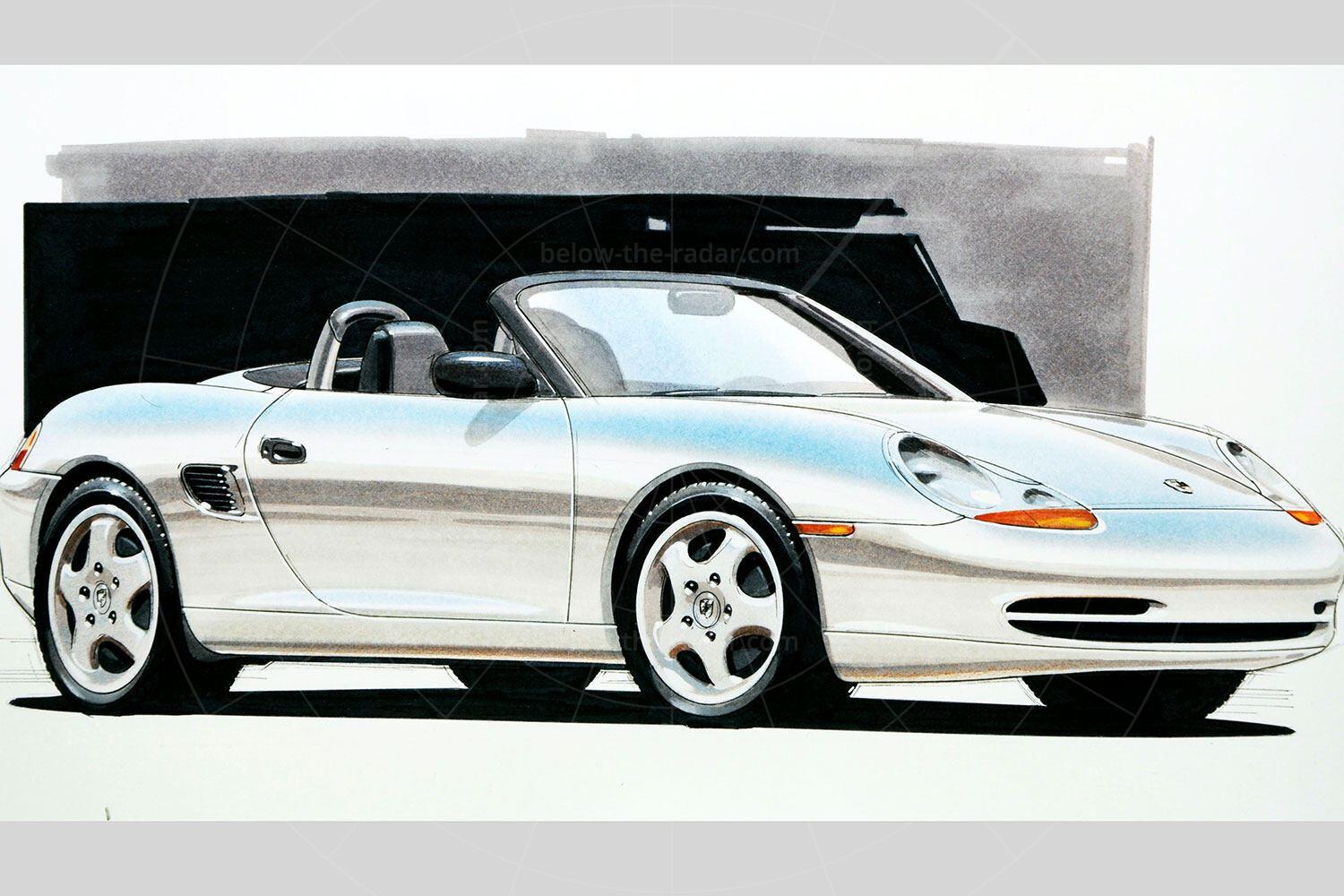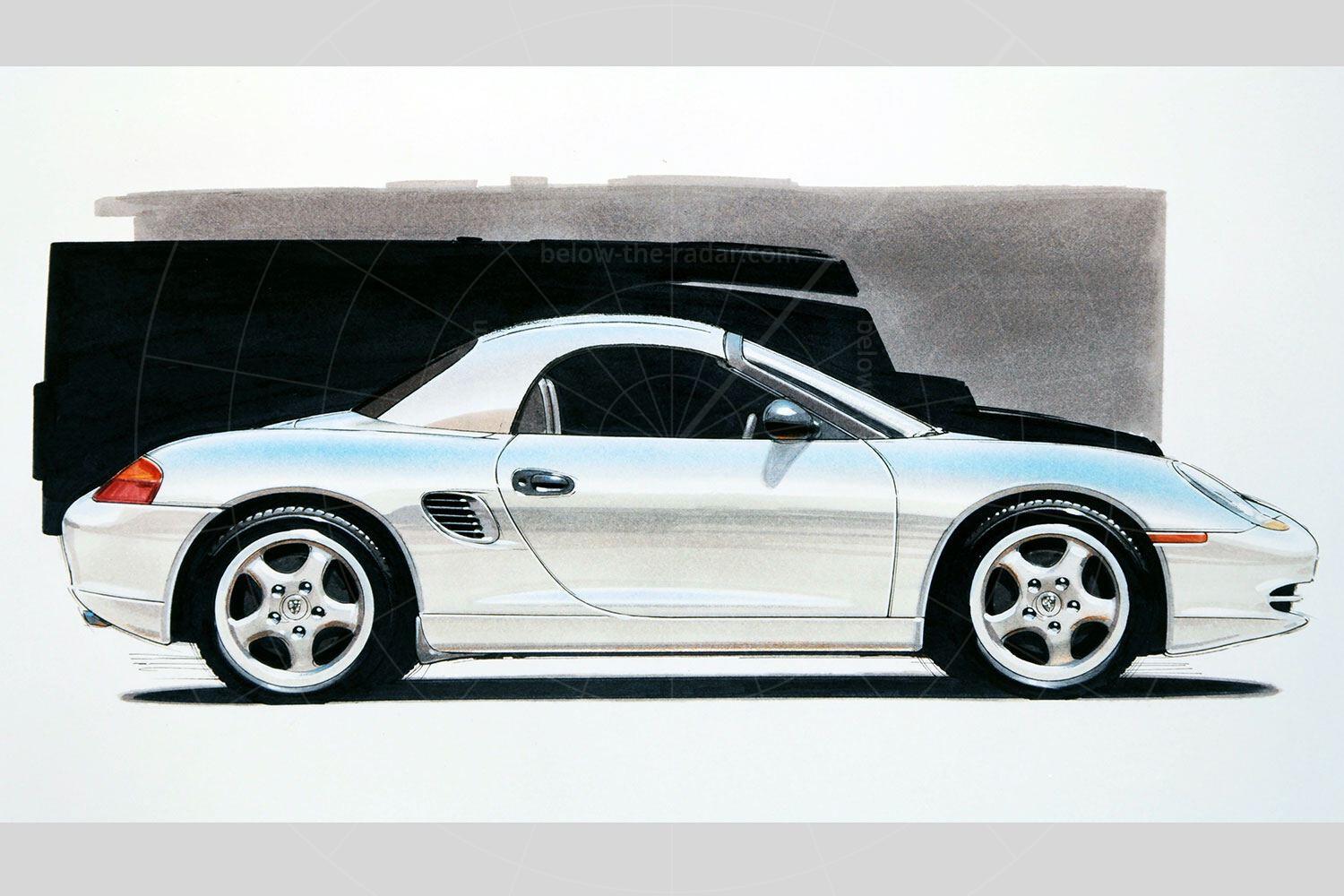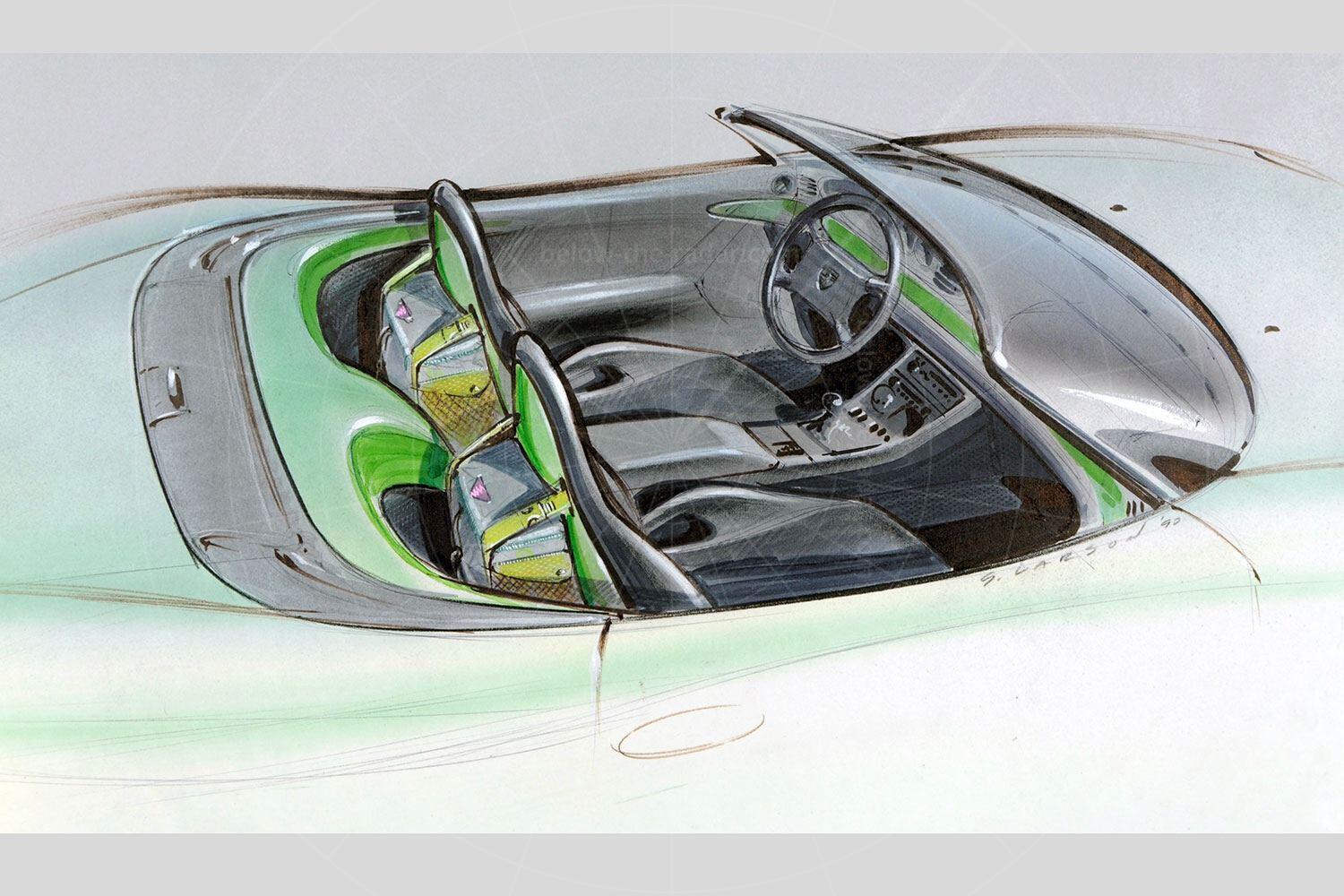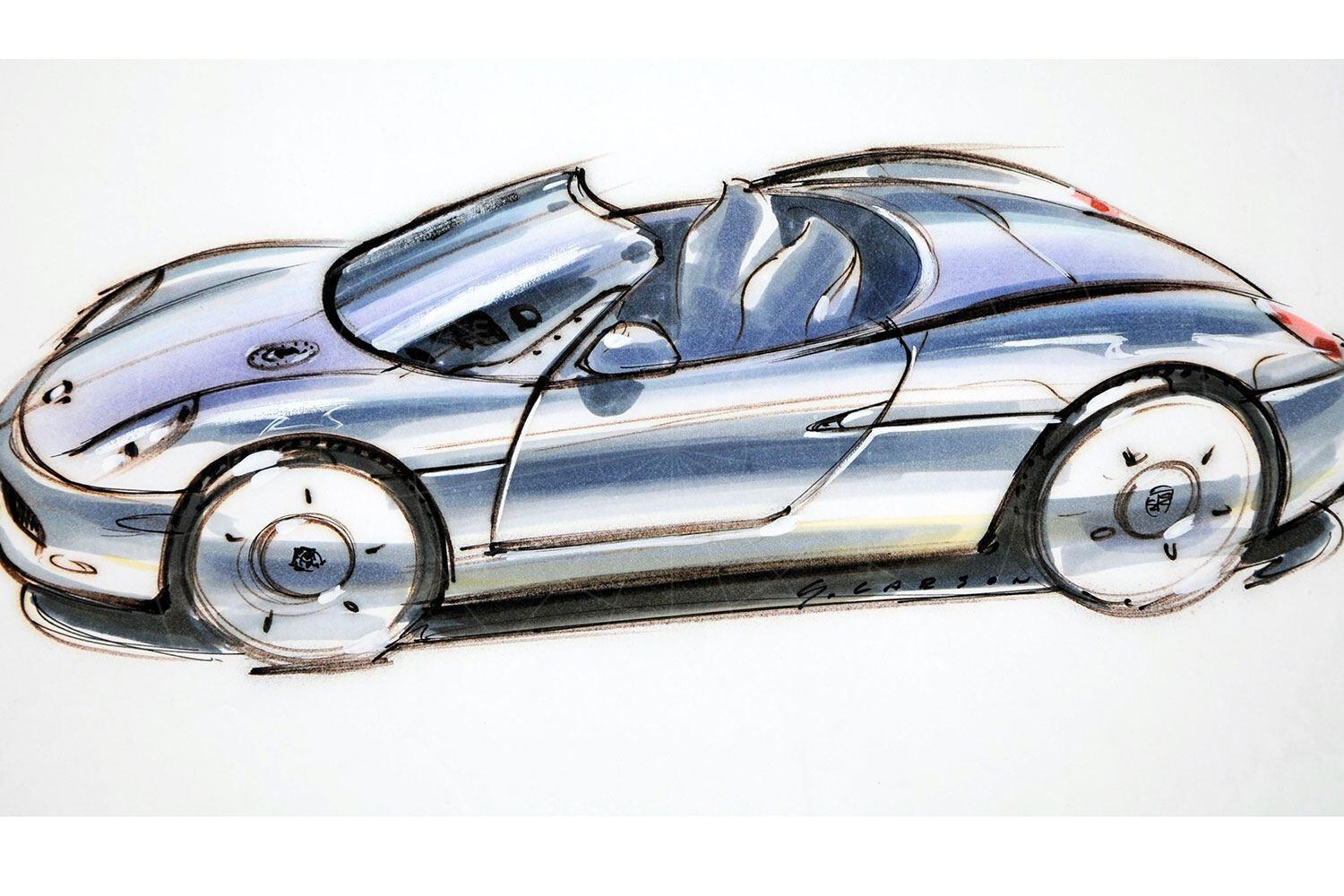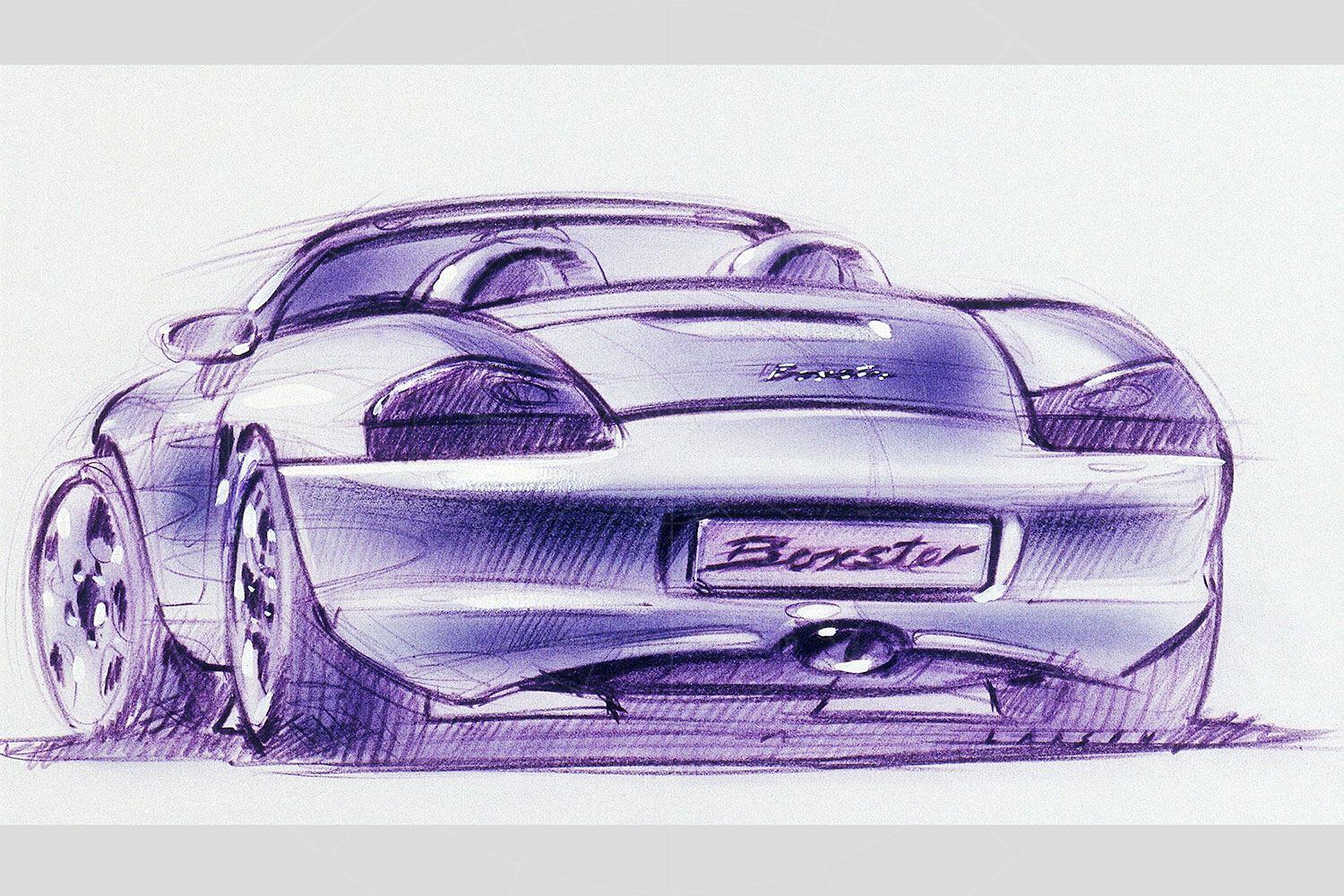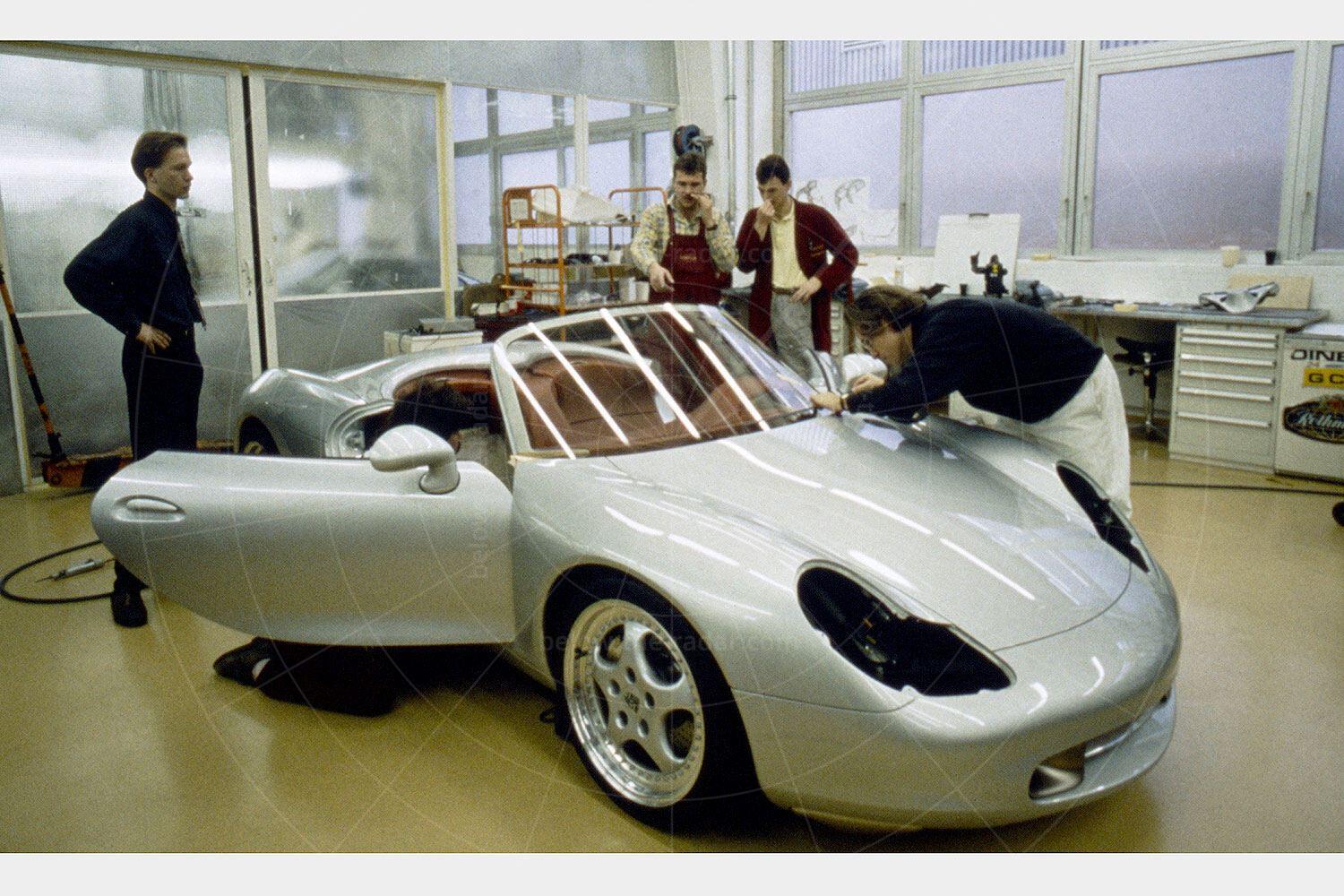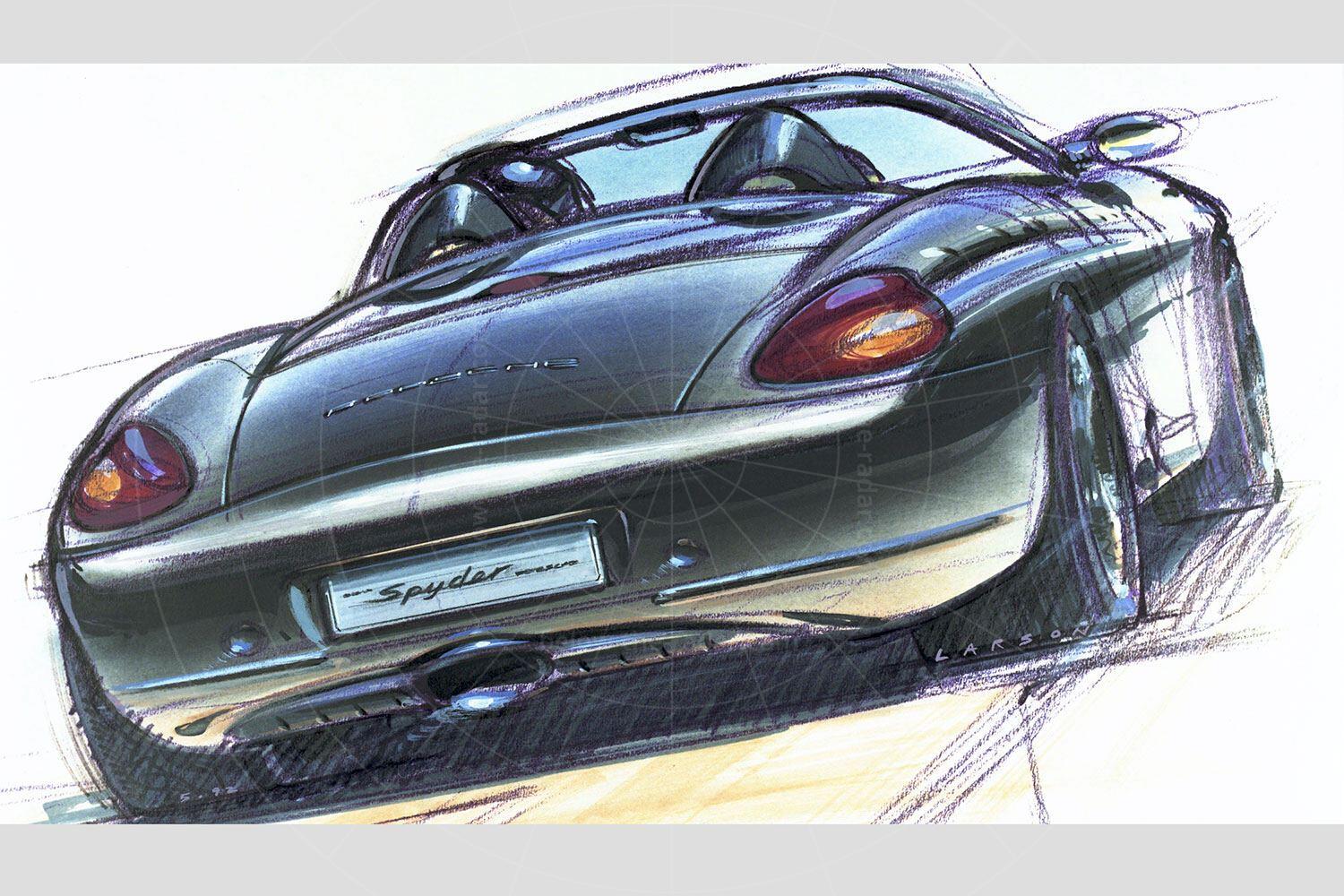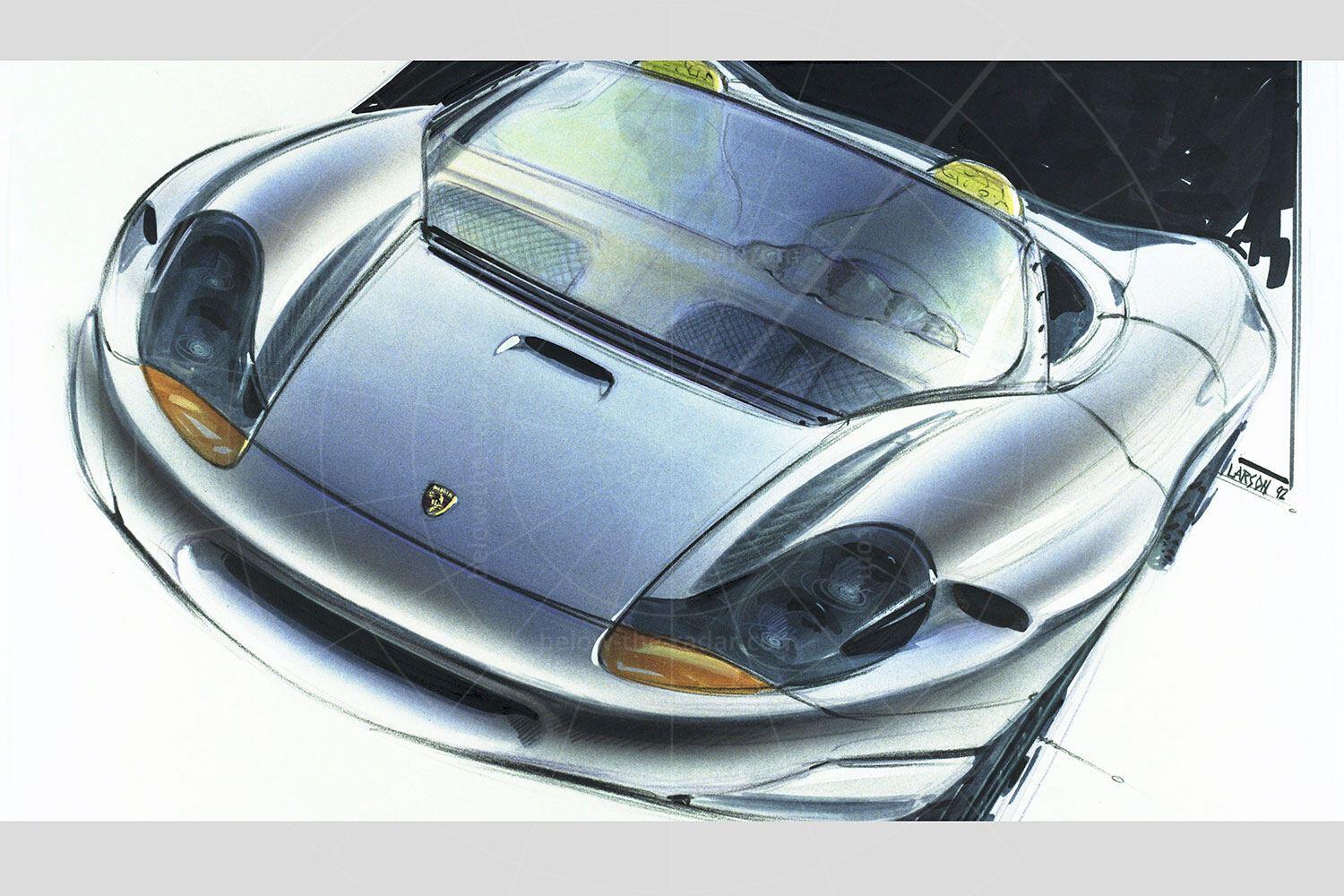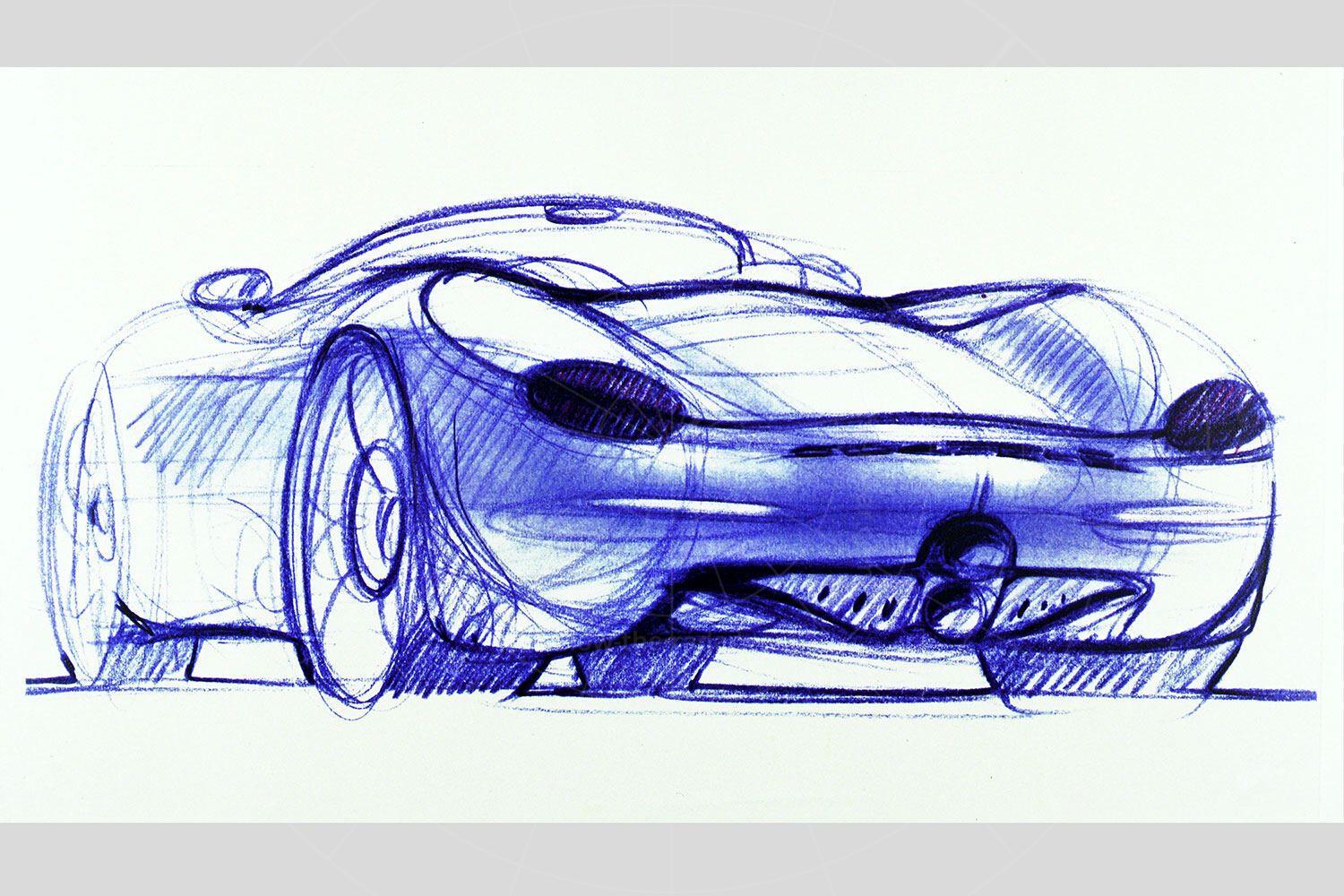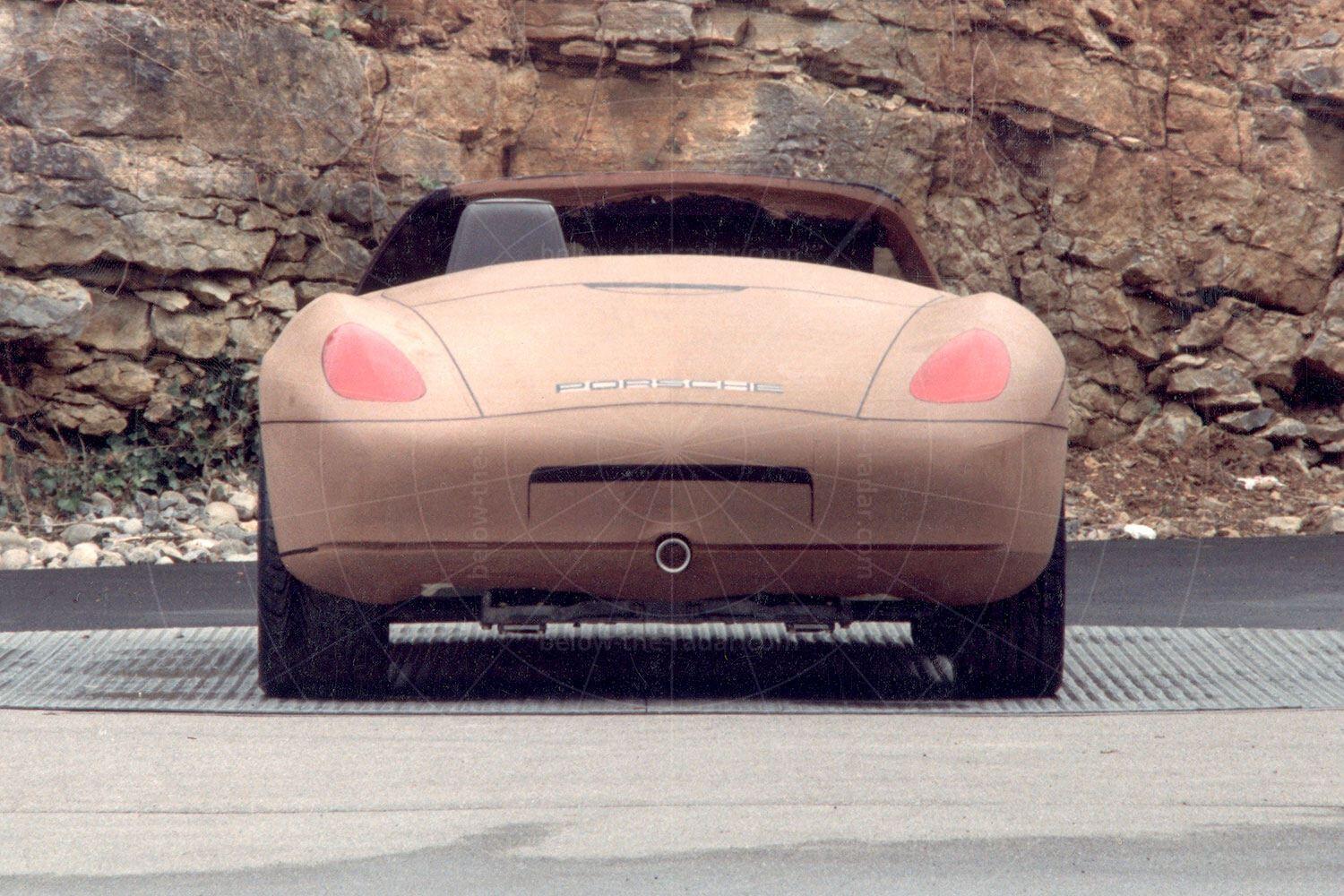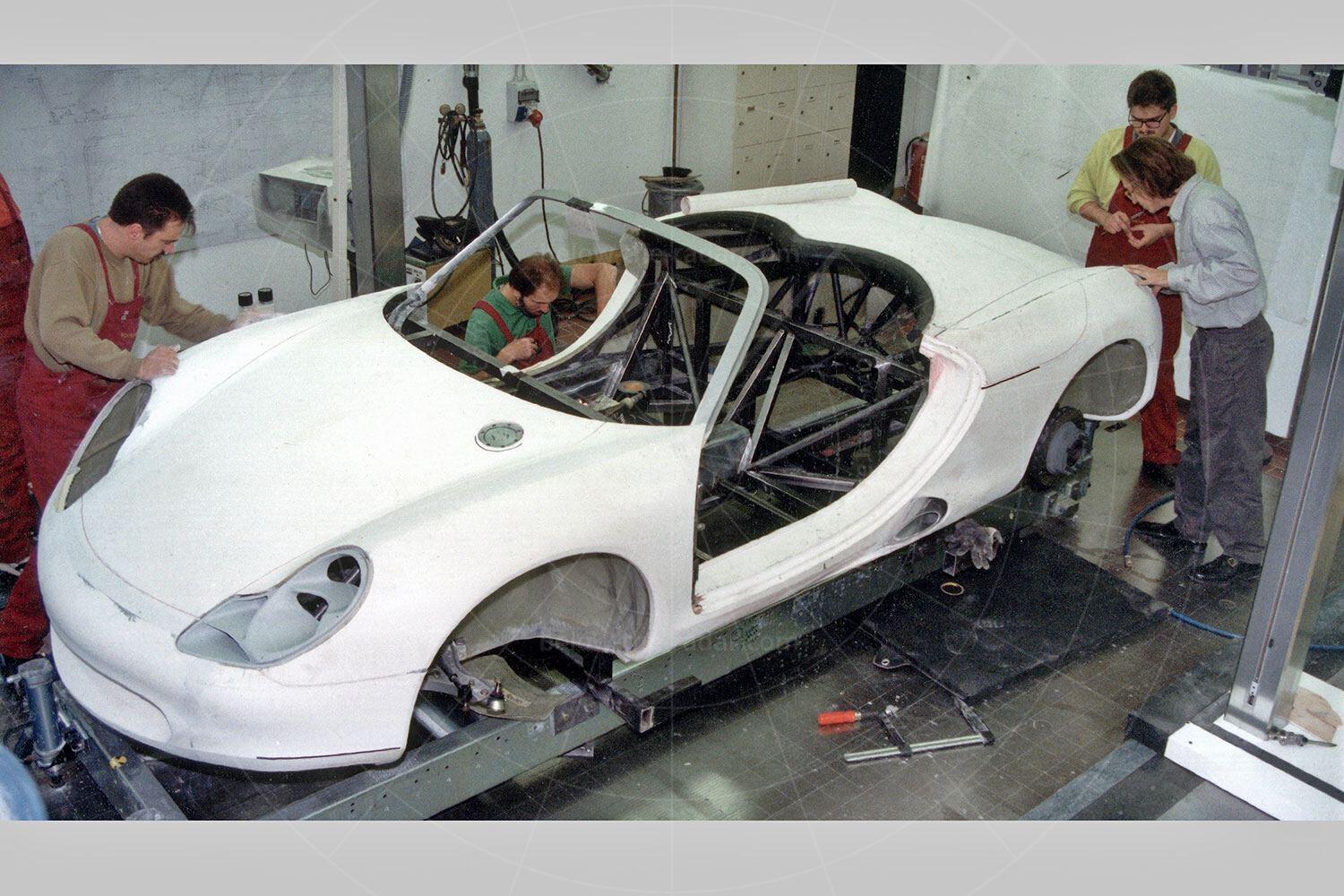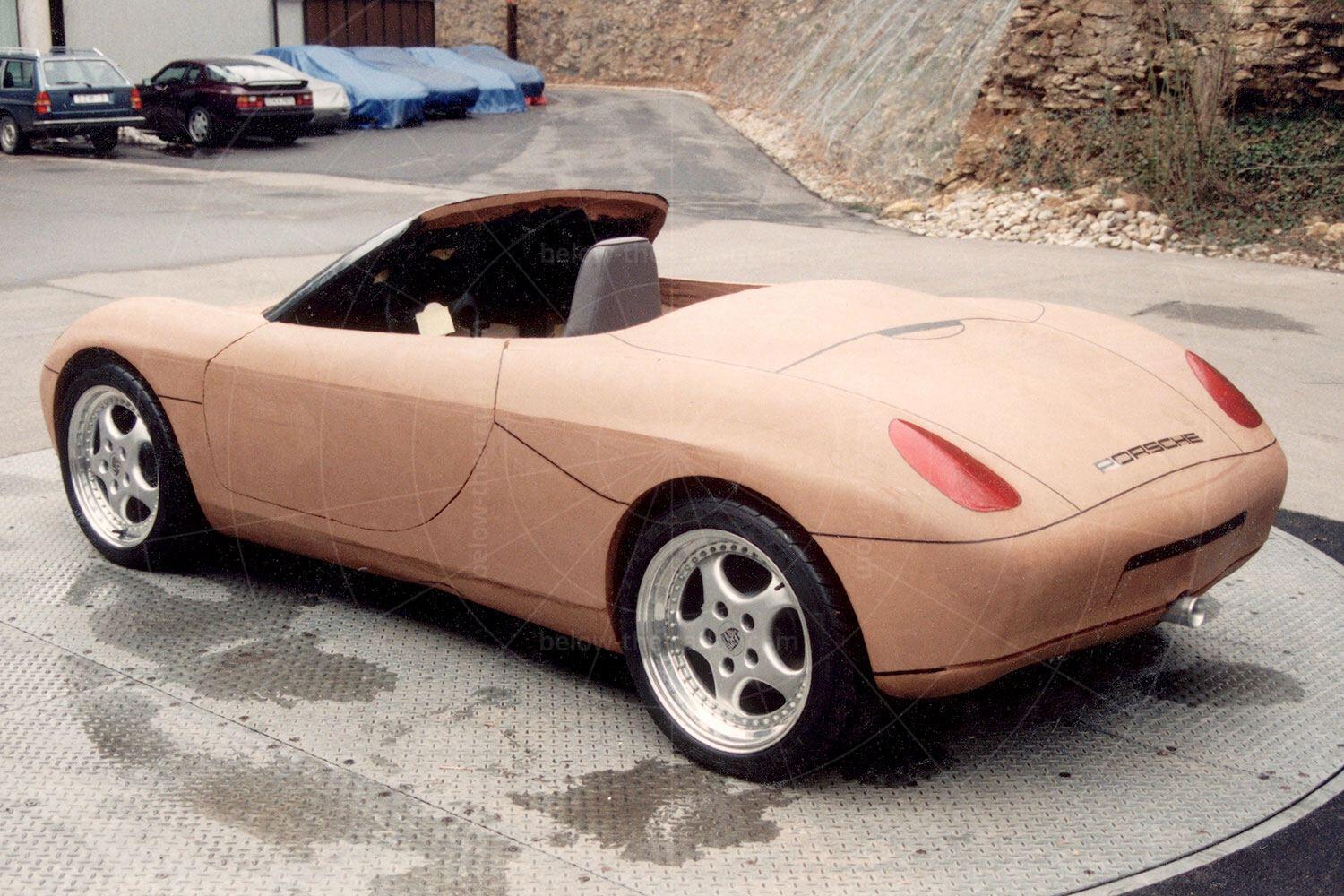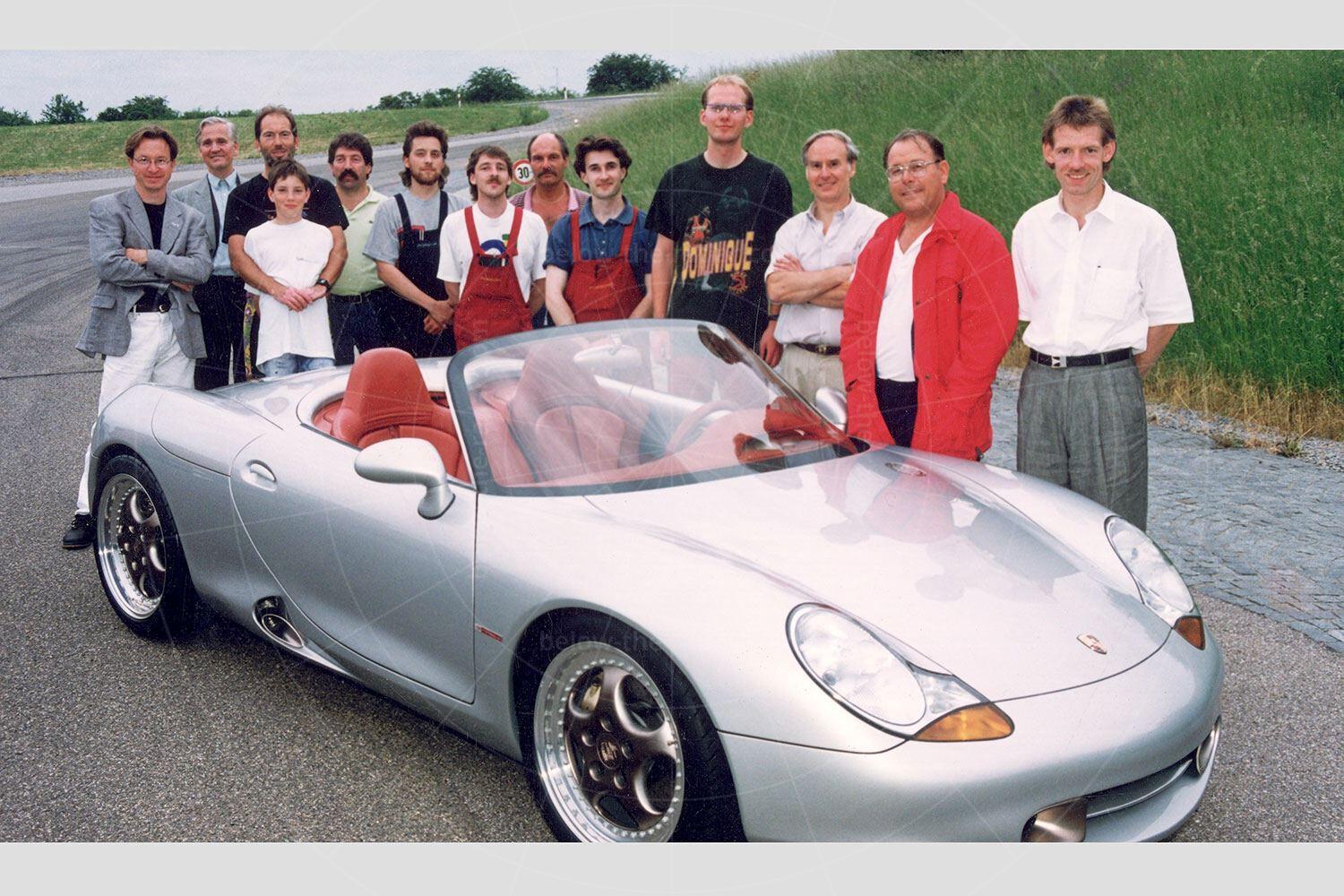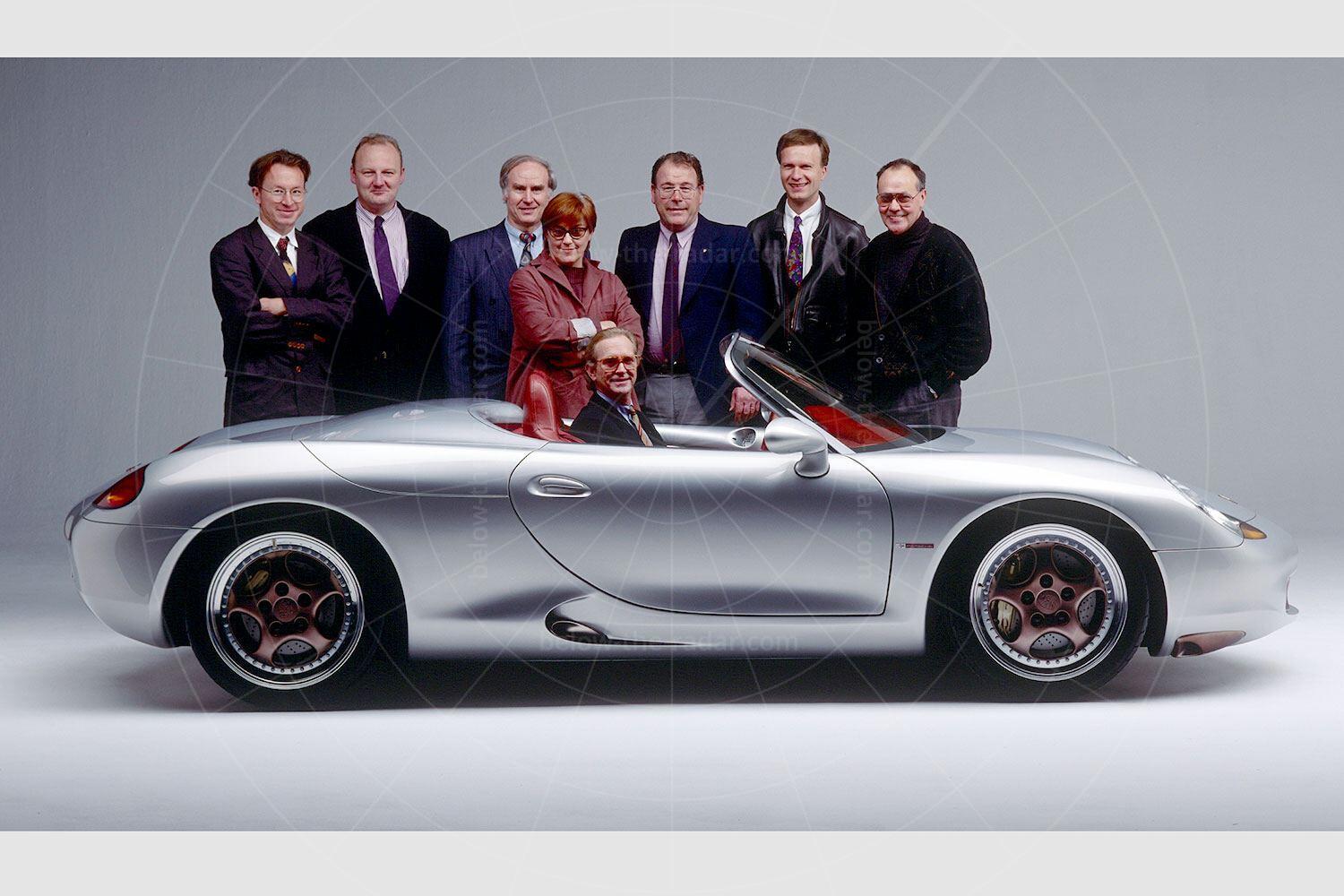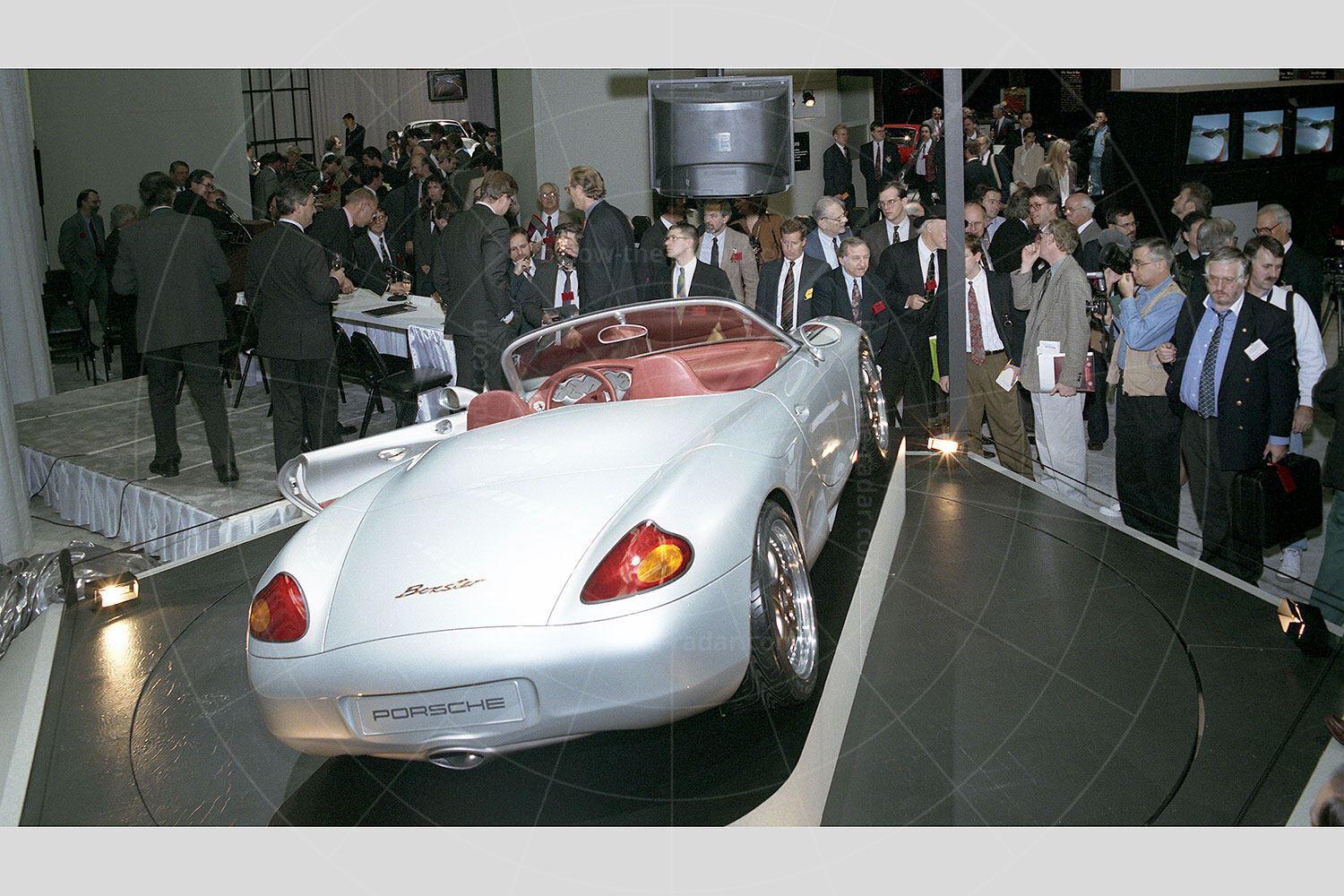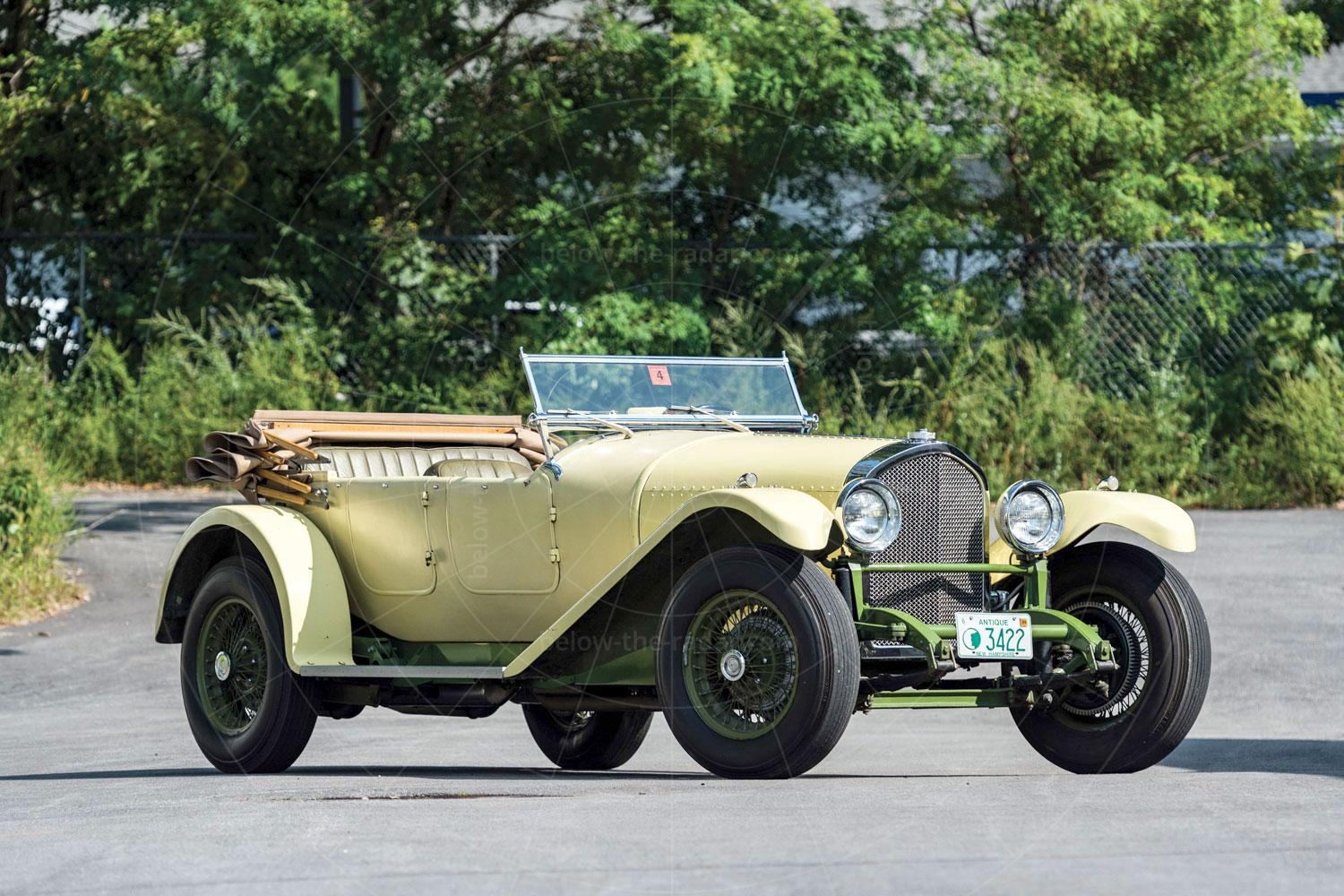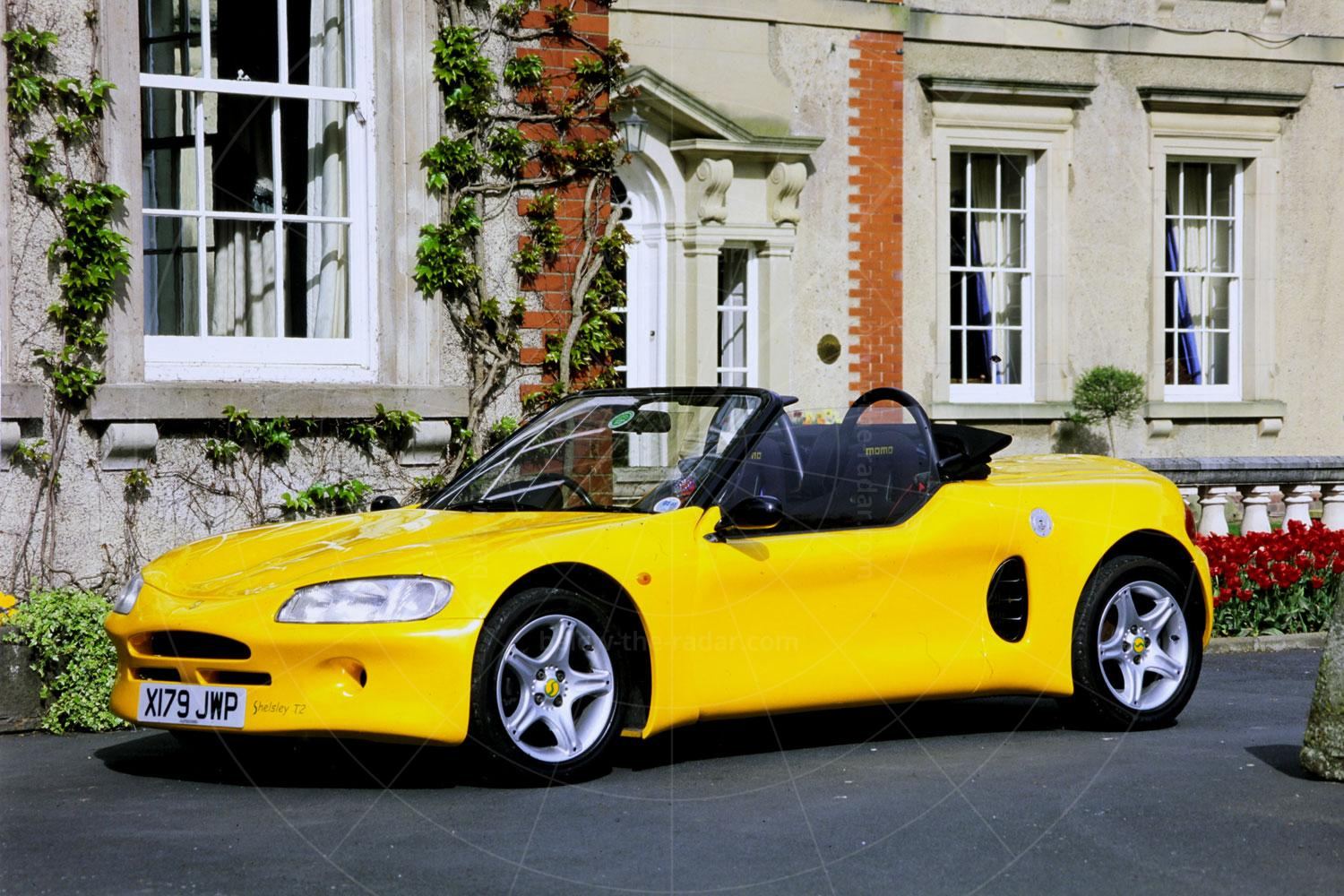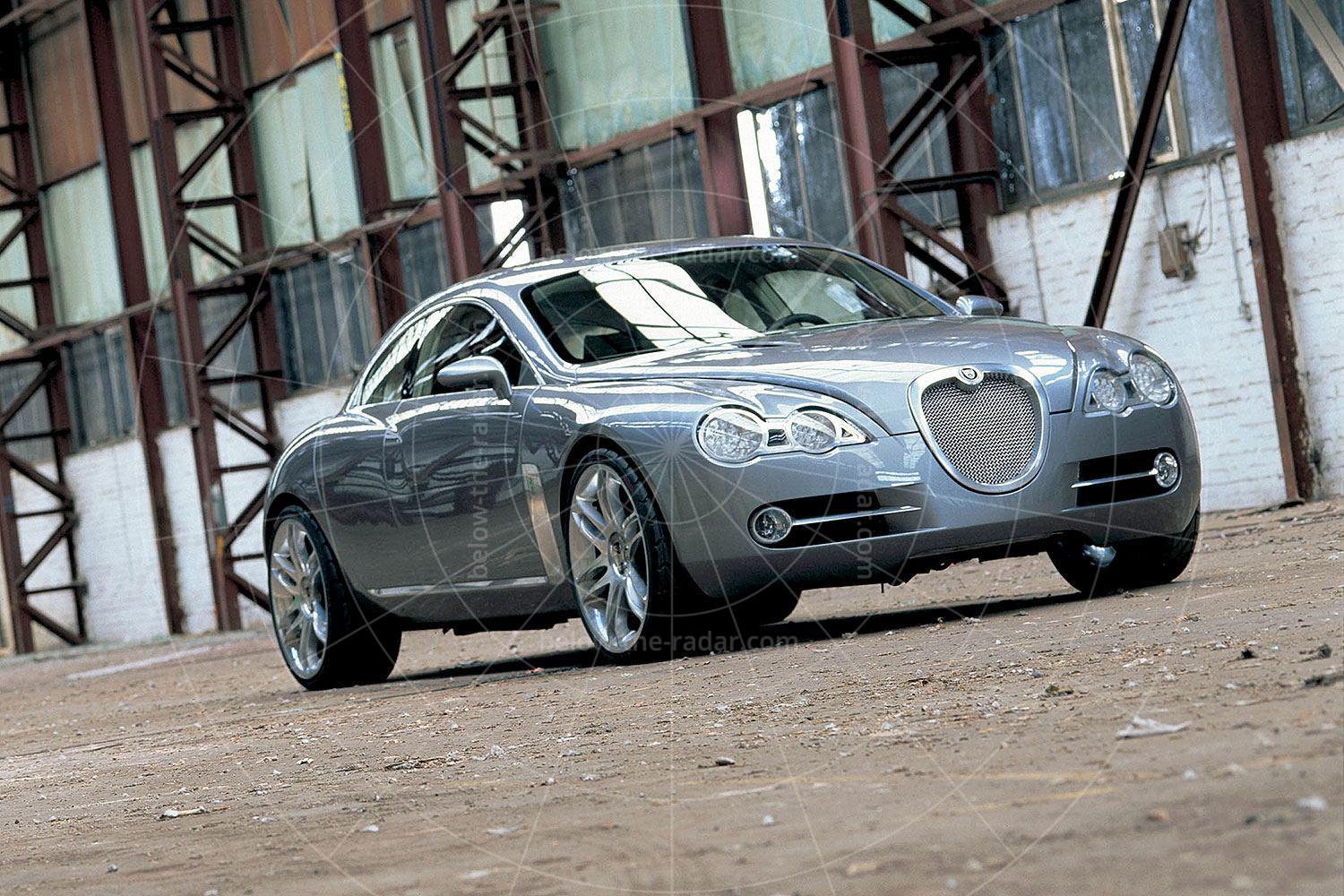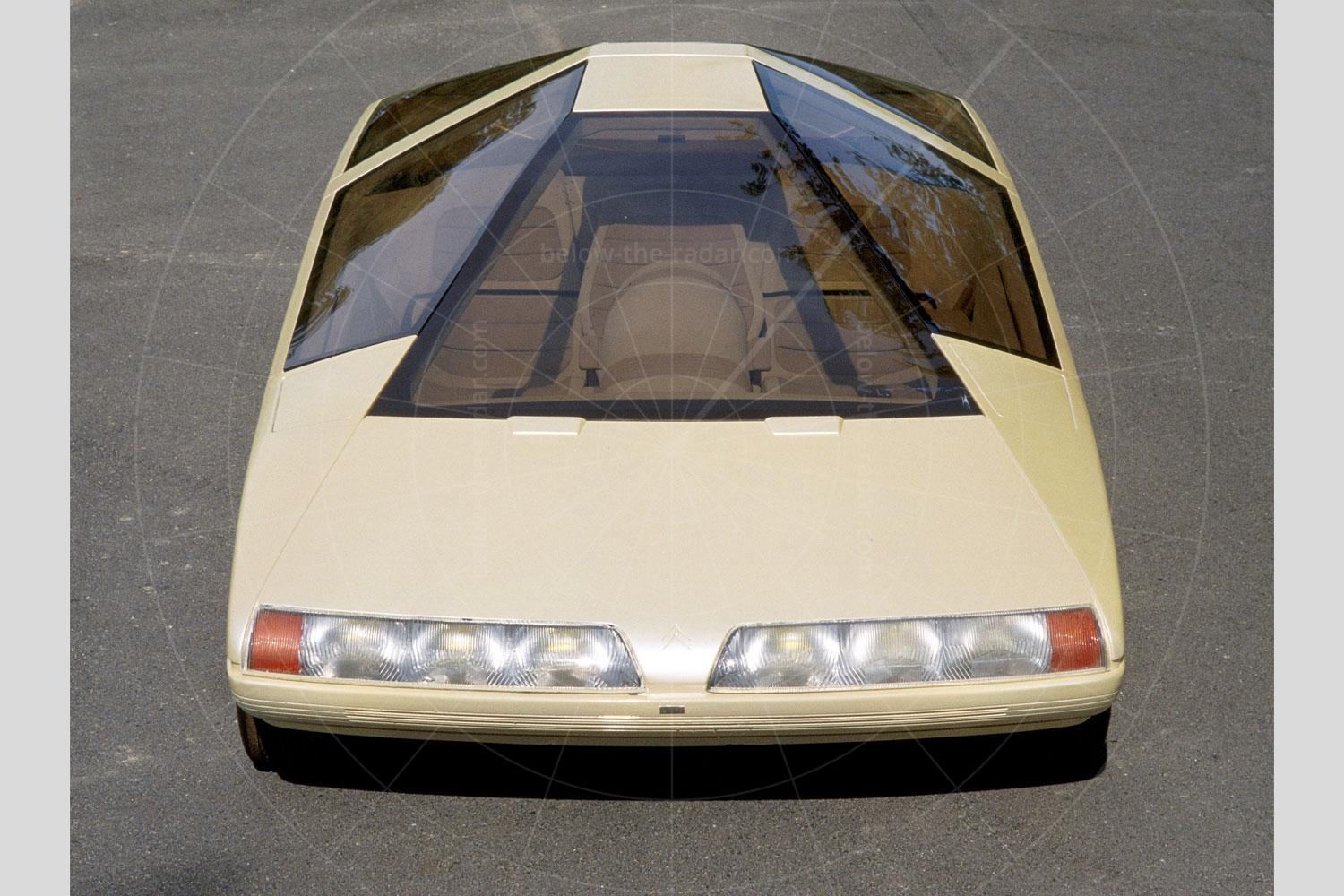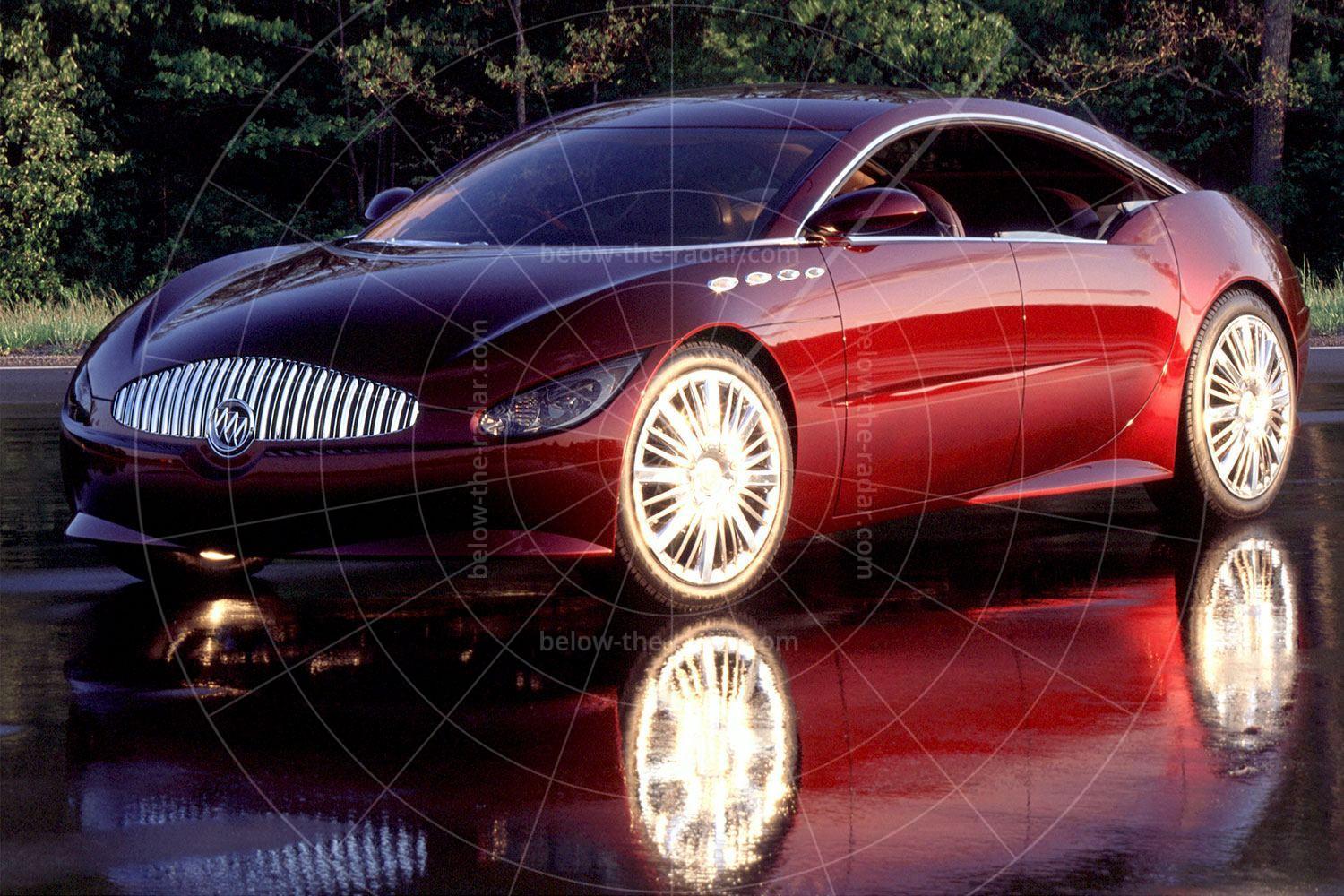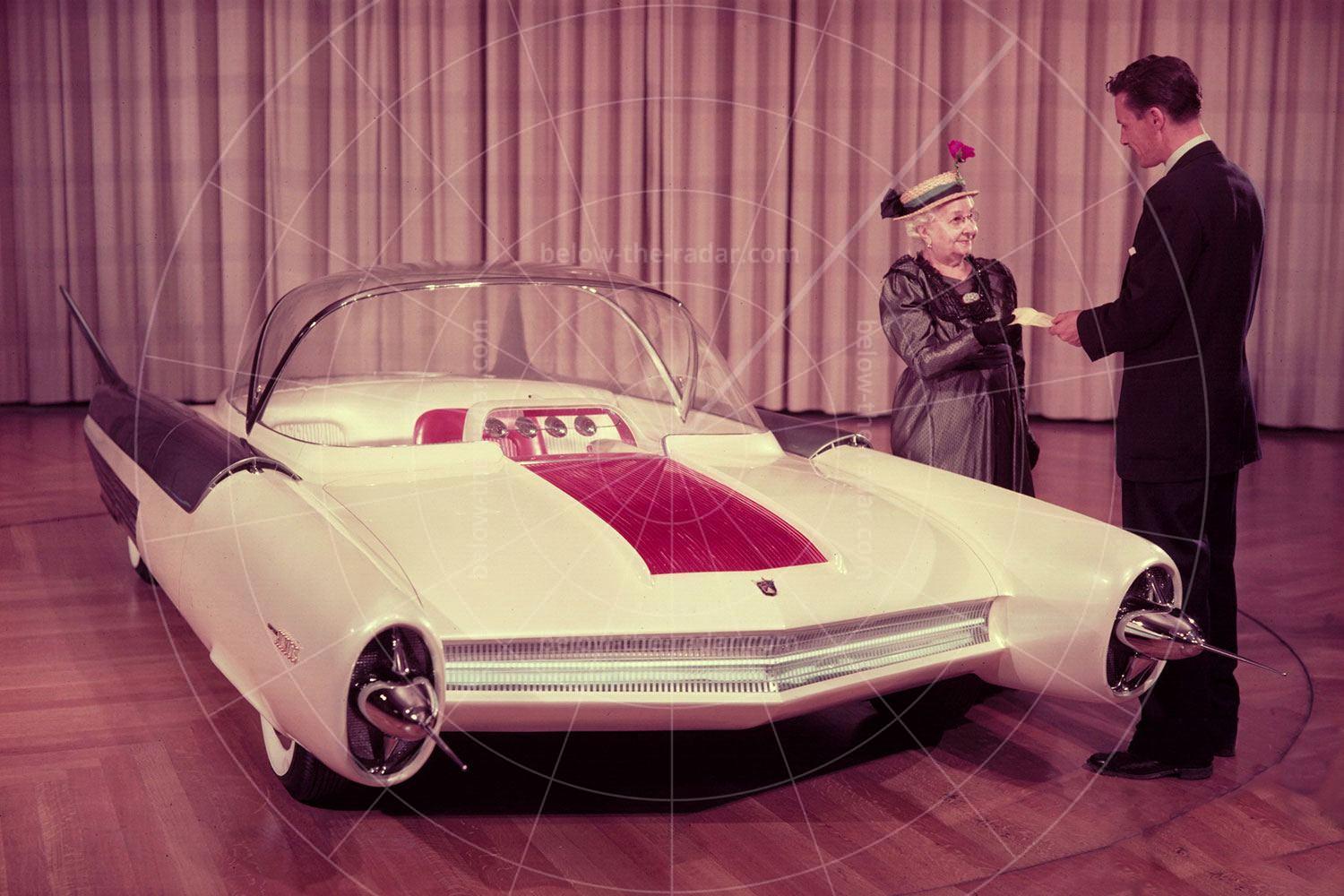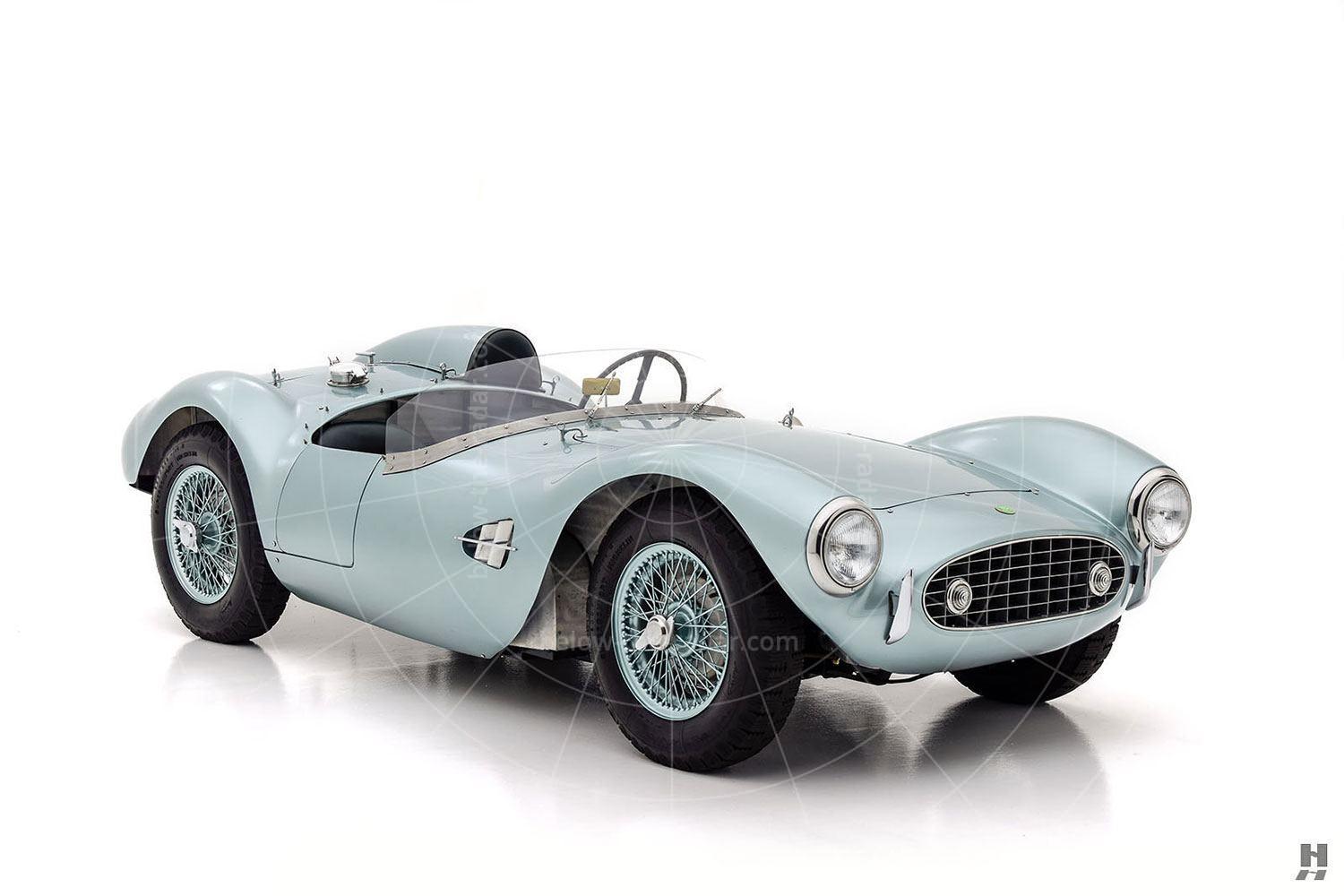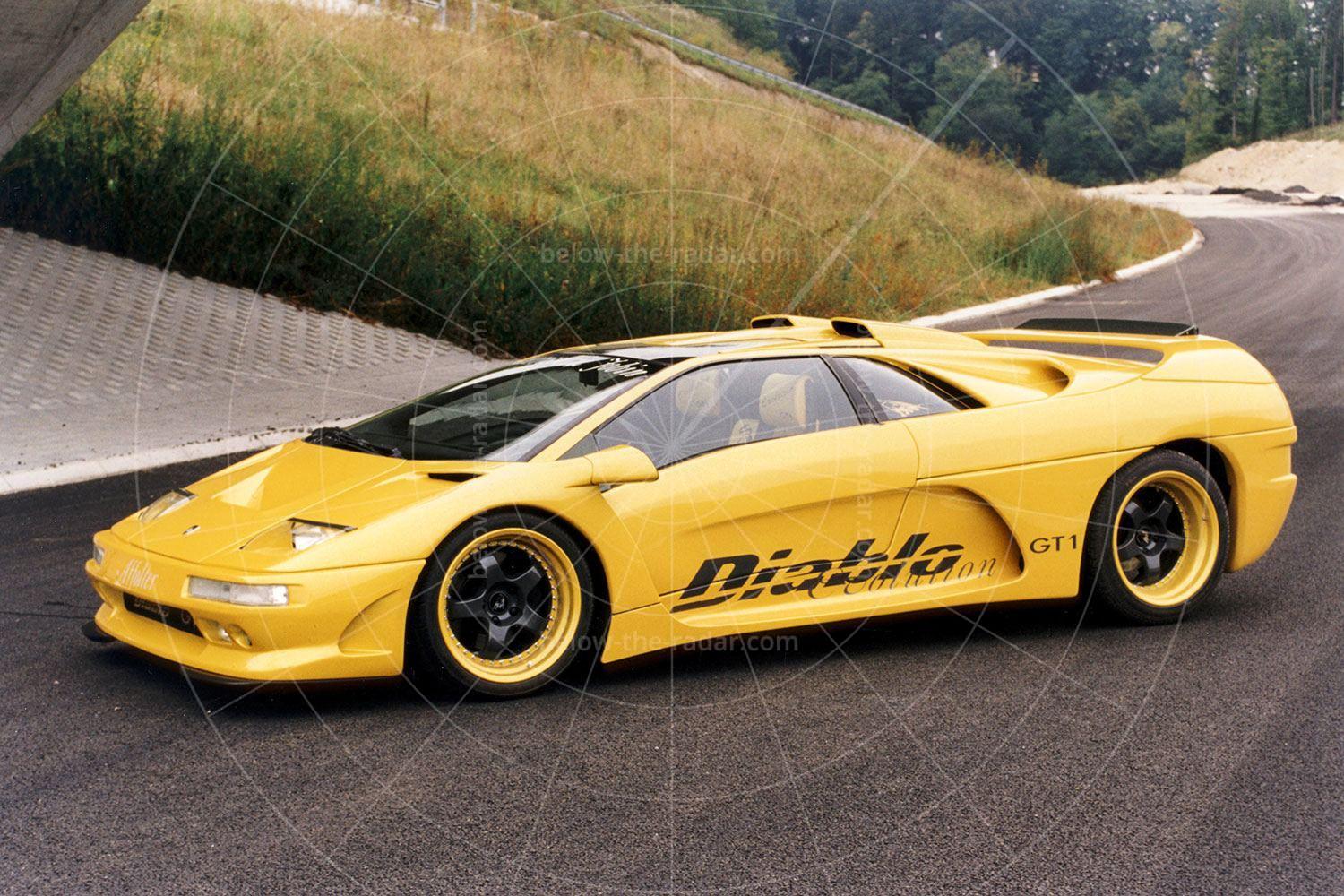As soon as the Porsche Boxster was shown as a design study at the 1993 Detroit motor show, it was clear that this was much more than just a design study. Porsche was going to put the car into production as long as enough interest was shown, and sure enough, very quickly the deposits came in thick and fast. But many of those who put their cheque in before the final production car was shown, were disappointed. Between the concept and production stages the Boxster’s design was watered down, and there were many who decided the road car was too tame after such a beautifully detailed show car had been displayed.
That first Boxster concept had incorporated some fantastic details, such as the polished air intakes at the front, with another one at the rear of each sill. A single exhaust in the centre of the rear valance was also neat, but it was the interior which was changed the most in the transition to production car – the loss of the red leather was no hardship, but the production Boxster looked less futuristic. Incorporated into the dash was a liquid crystal display, which was at that time something quite revolutionary; it also helped to keep the fascia uncluttered while offering the right balance of futurism and retro.
Under the skin the Boxster featured double-wishbone suspension all round, with 17-inch wheels fitted front and rear. There was a 2.5-litre flat-six engine capable of producing up to 249bhp, which was enough for the car to crack 160mph while despatching the 0-62mph dash in around six seconds.
Many of the external styling cues were borrowed from the classic 550 Spyder, RSK and even the 911. Cashing in on heritage was a common theme that ran throughout many concepts during the 1990s, and with such a rich past to trade on Porsche wasn’t going to miss a trick. But the Boxster was also very compact, with its mid-mounted engine sitting behind just a pair of seats. Yet despite its lack of length the car sat on a wheelbase which was longer than a 911’s; something which would make its handling less edgy while also giving it a more comfortable ride.
At the front there was a new design of headlight, which would later be incorporated into the updated 911 (and later still the Cayenne), while at the rear the tail lamps were beautifully integrated. Also very neatly incorporated was the large central exhaust, which sat flush with the valance beneath the number plate.
The interior was designed by Stefan Stark, and he opted for something that was simple but very high quality. To that end there was a single instrument cluster, but those dials were beautifully crafted with an aluminium surround that echoed the alloy detailing seen elsewhere around the cabin. In a very neat reversal of standard design, these instruments featured the calibrations on the glass rather than the dial itself; something which didn’t make it to the production model unfortunately.
The gearstick protruded from an alloy surround, and the gear linkage itself consisted of an exposed rod – something that was very retro. There was a liquid crystal display in the centre of the fascia which incorporated a TV, stereo, satellite navigation system, on-board computer and telephone. The alloy trim which ran down the centre console also incorporated ventilation fans and the controls for the heating and cooling systems; something else which was a superb design touch in the concept which didn’t make it into production.
But these were all quite obvious design touches; what was less obvious was the use of some quite unusual materials both inside and outside the Boxster’s bodyshell. Several of the cabin’s details along with the exterior badging was made of the same tortoise-shell acetate from which spectacle frames are made. That was another neat touch – which also didn't make it to production…
| Vital statistics | |
|---|---|
| Debut | Detroit, 1993 |
| Designer | Grant Larson |
| Engine | Mid-mounted, 2855cc, flat-six |
| Transmission | Manual, rear-wheel drive |
| Power | 249bhp |
| Top speed | 160mph |
| 0-60mph | 6.0 seconds approx |

